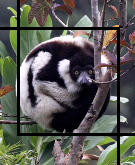Our amazing melanistic form Indochinese Leopard in Huai Kha Khaeng Nature Reserve section of Thailand's Western Forest Complex.
Four Days in Thailand's Western Forest Complex: A Trip Report
Check Our Our Pbase Galleries
It was at least ten
years ago when I was in the old Don Muang International Airport waiting for my
flight back to the states with Som and I was killing time rumaging through the
racks of books at Asia Books and I noticed these two coffee-table books on the
wildlife and nature of Thailand, "Thailand's
Wild Heritage" and "Wildlife
in the Kingdom of Thailand", both written by Bruce Kekule. (See Bruce's website here) Needless to say, I bought both of these books
immediately and I've been using them for years now to plan out our road trips
throughout Thailand.
While Cokie was a
young tike, we spent a great deal of time working our way through many of the
national parks of Thailand, focusing on the wildlife that was highlighted in
these texts, with great success. Thanks
to Mr. Bruce Kekule's books, we were able to visit these natural places and rack
up a very impressive species list, including species like wild Asian Elephants,
Clouded Leopard, wild Banteng, Gaur, Asiatic Leopard and many other mammal and
bird species.
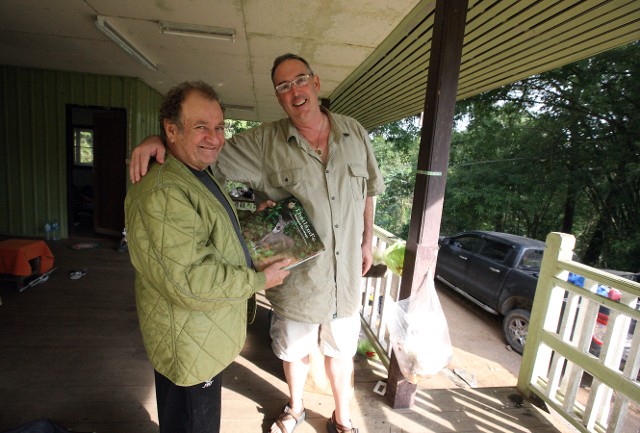
Bruce and one of his earlier books in the Western Forest Complex.
Although over the
years, we were able to see so much of what Thailand has to offer, there was
much in these books that I knew would be out of reach forever. In these works, there were images of wild
Southeast Asian Tigers, Black Asiatic Leopards, herds of Gaur and Banteng that
were photographed in areas and reserves that were simply out of reach to normal
folks like us. Much of Bruce's
photography was captured deep inside Huai Kha Khaeng Nature Reserve, Thailand's
premier wildlife hotspot and is well known for being basically impossible to
get in to.
As we learned early
on, entering Huai Kha Khaeng is by special permit only and getting deep inside
the reserve is limited to rangers, scientists and the super elite VIP's and the
well-connected. Somehow, Bruce Kekule
was allowed in to these special places and was able to capture on film
countless images of so many of the rarest and charismatic species in SE Asia.
Eventually was able to
contact Mr. Bruce Kekule a few years back and we communicated over the years
and talked about eventually getting out to the field together. And finally in December of 2014, we finally
made it happen!
Of course of
destination was Huai Kha Khaeng, one of the 19 parks and reserves found in
Thailand's Western Forest Complex, the largest tracks of SE Asian forests that
remains. Covering some 5775 square
kilometers, the Western Forest Complex is home to some of Thailand's most
famous parks, including Tung Yai and Erawan and many others. The Western Forest Complex protects habitat
for many of SE Asia's most rare and precious species, including SE Asia's the
last remaining viable tiger and leopard populations and their prey base.
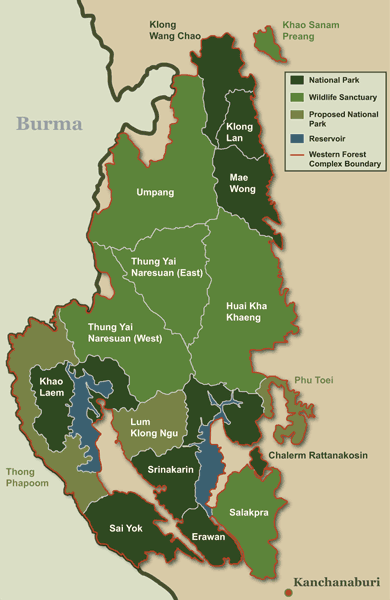
Thailand's Western Forest Complex. Nineteen outstanding national parks and reserves comprising the most important Southeast Asian wilderness. (Linked from: http://www.ecn-thailand.org/images/map_detail.gif)
Som and I managed to
get permits to Huai Kha Khaeng reserve of the Western Forest Complex back in 2007 (See Trip Report Here) but we
were limited to the headquarters area and some various treks in and around that
zone and in the south at Huai Mae Dee.
While we did pretty well on that trip, we were not able to get deeper in
to the core area of the reserve. But
this time, with Bruce Kekule, we had permission to go where ever he wanted, and
that was pretty much anywhere in the reserve!
Bruce is a very
colorful character whose life story flows from the stories he tells, all of
which are fascinating and comprise a
life worthy of a movie. Having lived in
Thailand for over 50 years, Bruce is fluent in Thai and has more connections
that I can imagine. I was very impressed
with the level of deference the folks in the reserve showed Bruce. At every level, the station heads as well as
the lower level rangers all knew "Mr. Boot" (the Thai pronunciation
for "Bruce") and made sure everything was in perfect order for him. With this level of cooperation from the
reserve personnel, it became very clear why he was able to get such magnificent
and consistent images of Thailand's wildlife.
Bruce is without a
doubt the world's most edept camera trap photographers. Bruce has many traps in operation throughout
Thailand at any given time and has been able to produce countless stunning
images of SE Asian Tigers, Asiatic Leopards, Clouded Leopards and numerous
other species over the years. He has
produced both still images and loads of video of most of the region's rarest
species. (See Bruce's Site Here).
Seub Nakhasathien
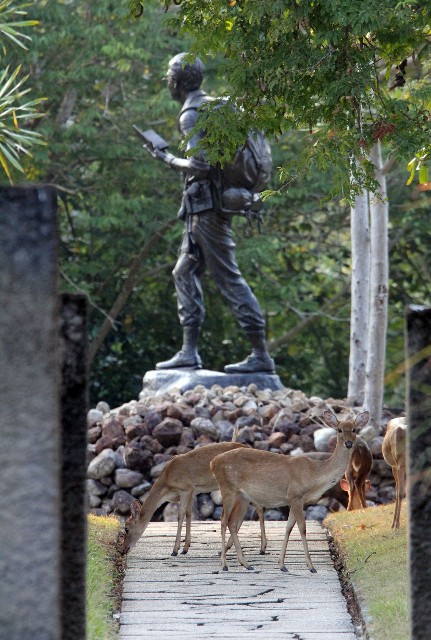
Seub Nakhasathien was the original commisioner of Huai Kha Khaeng. Seub martyred himself in 1990 after many frustrating years of trying to conserve Huai Kha Khaeng's natural heritage. Seub is widely regarded as one of the world's greatest conservationists. His image is everywhere in Huai Kha Khaeng. (More information about Seub here)
Our journey to the Western Forest Complex started from BKK, about 4 hours to the south east. The roads are all good and well marked. With a late start from BKK, we made it to the
headquarters of Huai Kha Khaeng in time to set up camp and talk about
what the plan was for the next several days.
The next day we were to journey deeper in to the reserve to Kraprok Krapiyen
Station, a location where Bruce has made some very impressive sightings over
the years. Very few people indeed are
allowed this deep in to the reserve.
On day two, we worked
our way through an impressively bad road about 24 kilometers in to the
reserve's core area. Luckily it was the
dry season or our 2X4 Isuzu pick-up never would have made it. The road was definitely off-roady in many
locations but our clearance was fine, and so long as it remained dry, we were
OK. Luckily it did remain dry. The worst part of the road was the numerous
bridges made out of 2 logs laid at axle width across a creek or a river, where
if you were to miss judge your tire's position, you would be killing an entire
day or more getting out of the mess! And
of course there was the angry elephant that greeted us every so often, and
charged us violently on three occasions during our drives along that track. And one of those instances was FAR too close
for comfort! The danger of elephants in
Huai Kha Khaeng cannot be overstated.
Asian Elephant (Elephas maximus indicus)
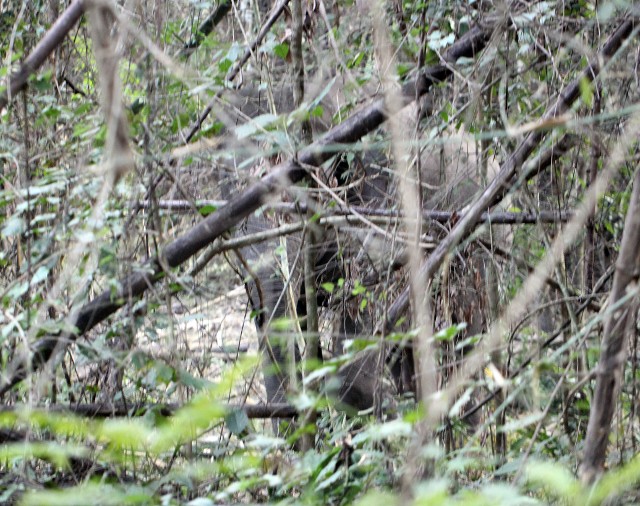
This is only picture of an Asian Elephant we dared to take. I think we spotted about three separate individuals but each incident was quite terrifying. These ele's had the urge to take us out!
Kraprok Krapiyen Station
was outstanding. Without a doubt this
was the nicest place I have every spent time in Thailand. Deep inside the mixed deciduous forest of
HKK, the area was filled with wildlife, ranging from numerous squirrel and primate
species and countless birds that were all easily viewed from the grounds of the
station. This week was extremely cool,
bordering on cold. The temperatures at
night were dipping as low as nine degrees celsius - for Thailand this is
cold. Luckily, Bruce was able to secure
us a nice cabin to spend our time and stay warm.
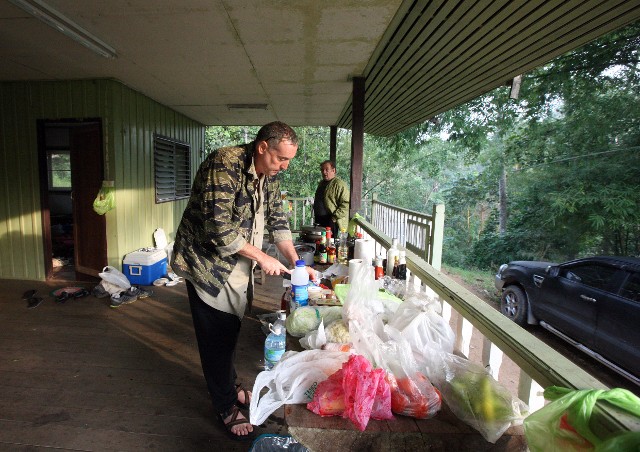
Yours truly cooking gourmet scrambled egges during our cold morning at Kraprok Krapiyen Station.
White-handed Gibbon (Hylobates lar)
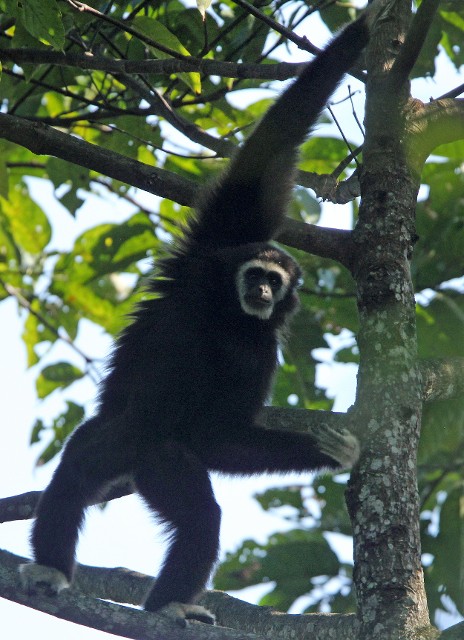
Our first morning in Kraprok Krapiyen, a troop of White-handed or Lar Gibbons came by to say "hello"...
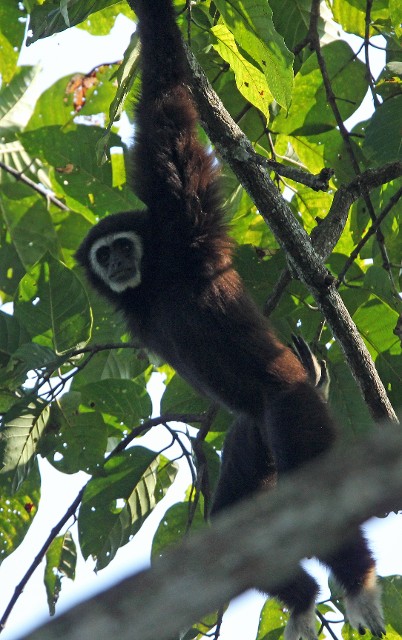
White-handed Gibbon - black form.
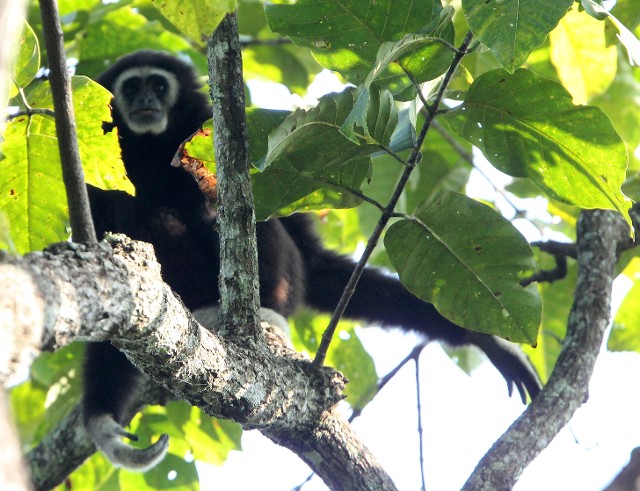
The dark morph of the White-handed Gibbon.
Phayre's Langur (Leaf Monkey) 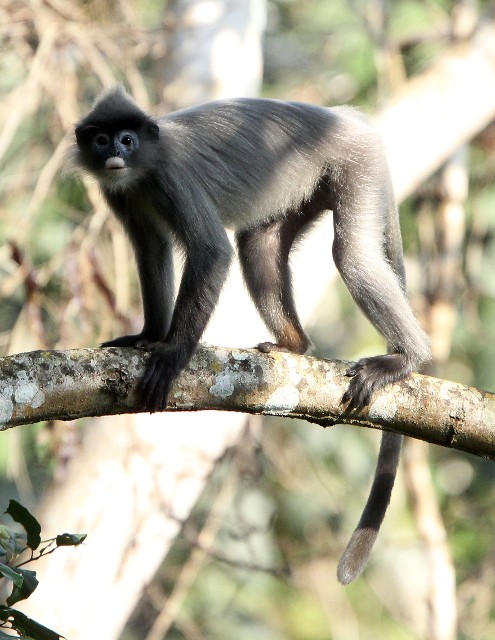
Following the White-handed Gibbons, the Phayre's Leaf Monkeys came through for quick "hello"...
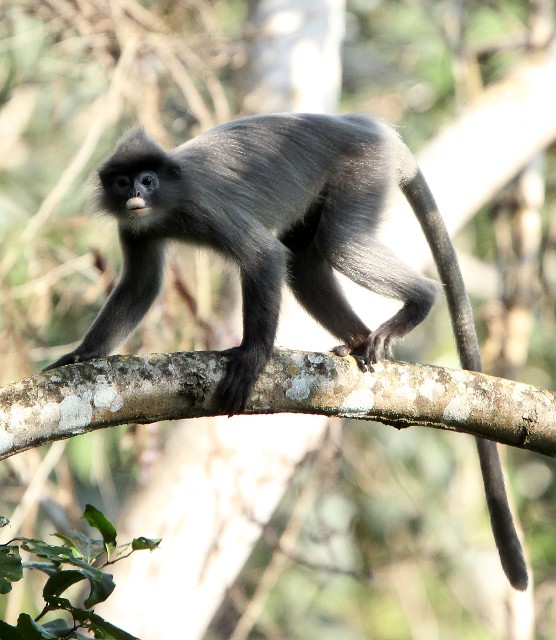
Seriously challenging to photograph. If you are not quick you will not get 'em!!!
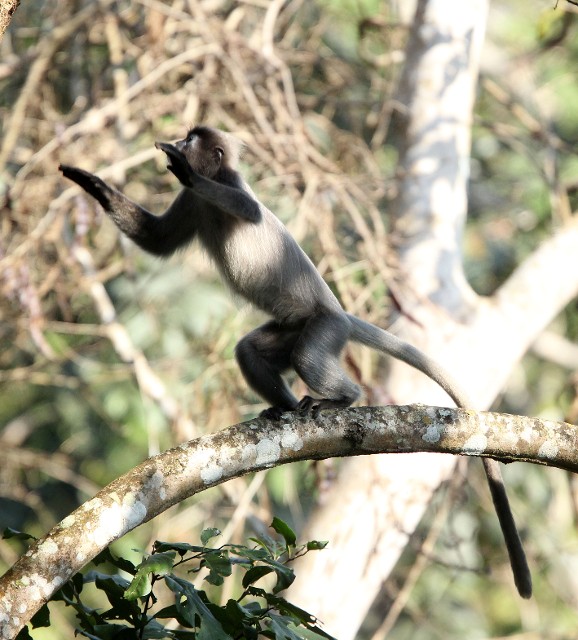
Taking a leap!
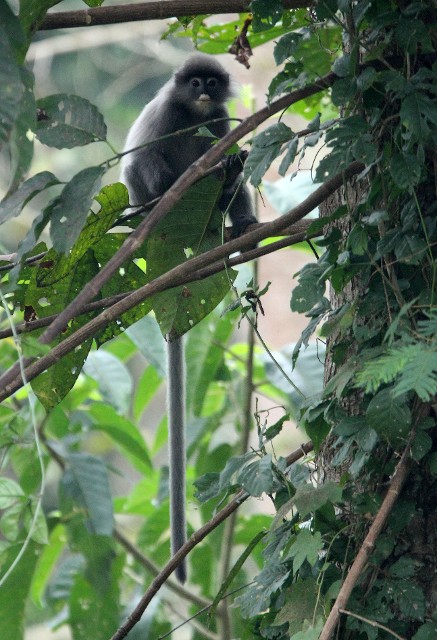
This troop was noticed in Khao Ban Dai on our last morning in the Western Forest Complex.
Northern Treeshrew (Tupaia belangeri)
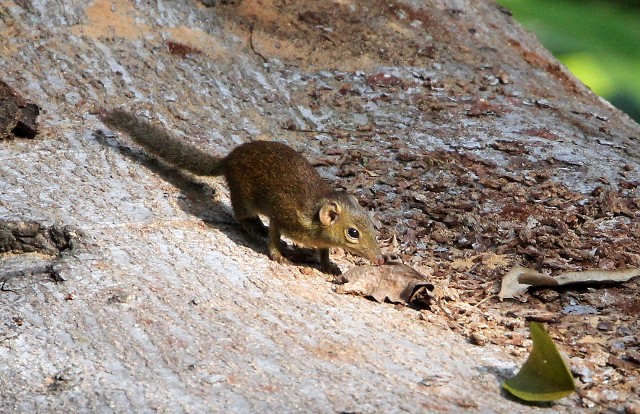
Northern Tree Shrews were a common sight throughout the reserve.
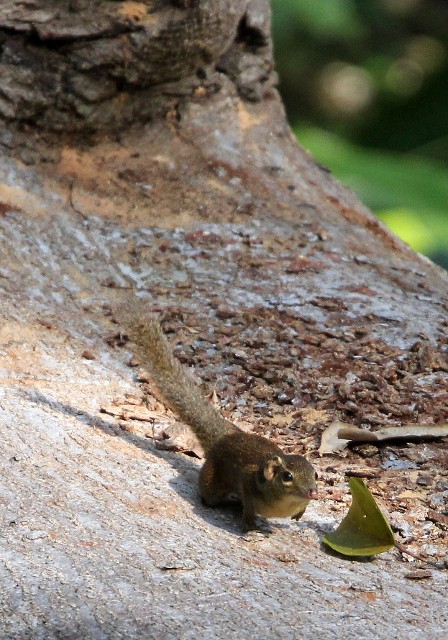
Northern Treeshrew coming in for a closer look.
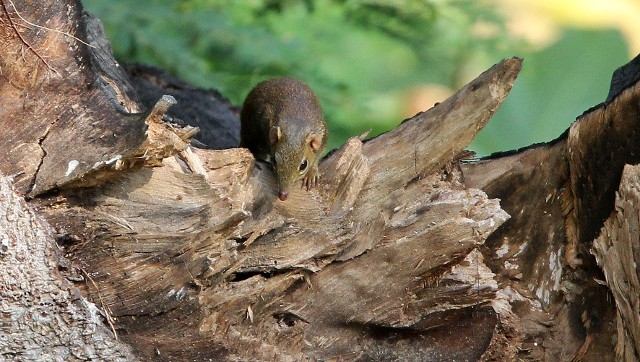
We saw several Northern Treeshrews in the reserve, and interestingly they were much smaller than the examples we spotted in Yunnan a few years earlier.
Grey-bellied Squirrel (Callosciurus caniceps)
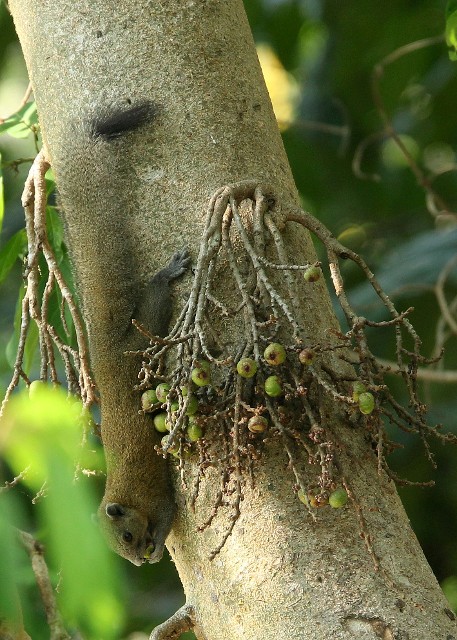
Grey-bellied Squirrels were common in all locations in the Western Forest Complex.
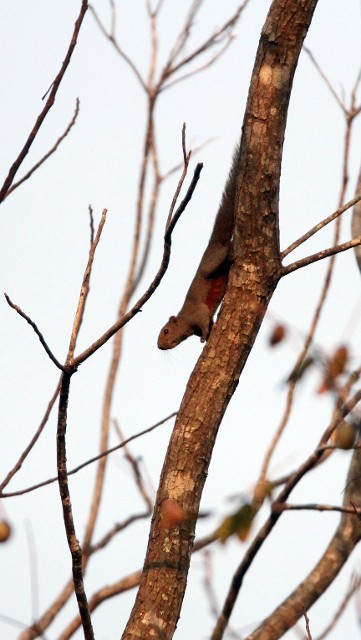
Grey-bellied Squirrel
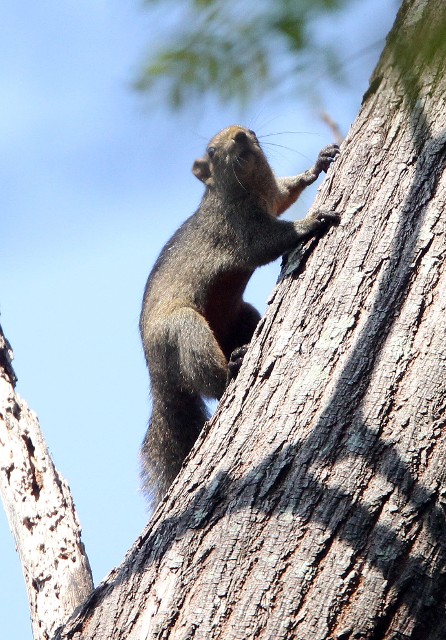
Perhaps the most common I've seen in Thailand except for the Variable Squirrels.
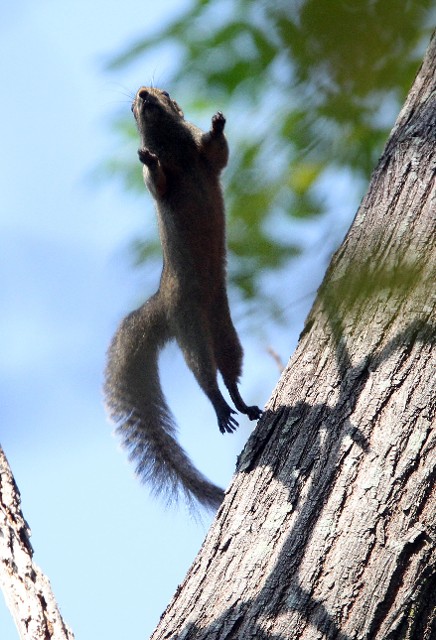
Taking off!
Burmese Striped Squirrel (Tamiops mcClellendii)
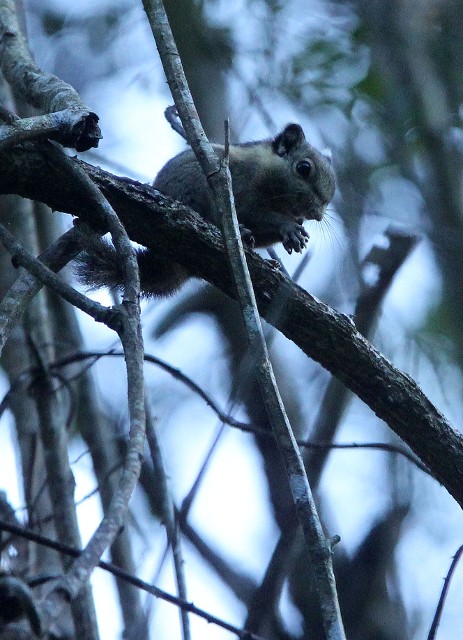
Many Burmese (or Himalayan) Striped Squirrels were spotted in HKK.
After we set up camp,
we continued about ten kilometers deeper in to the core area to a mineral lick
that Bruce had worked at for many years.
My truck, being a 2X4 was not adequate for the road, so we all piled in
to Bruce's Ford Ranger (a really nice rig) for the trip in. About 45 minutes or so, we found ourselves at
a junction of many elephant trails that were well worn into the fabric of the
forest. Bruce of course knew exactly
where we were, but even if my life depended on it, I would never be able to
find that spot again. Our first task was
to assist Bruce in setting up a new camera trap location. There was much more to the job than I would
have surmised. Laying and burying cables
and mountain sensors, flashes and the camera itself. It was quite a job and it was clear that
Bruce was a master at this. The proof
really is in the pudding - the quality of images he has been able to get over
the years is unrivaled.
After setting and
testing the camera trap, we trekked a bit less than a kilometer in to the
forest along wildlife trails that were unnervingly difficult to navigate (both
Som and I got lost on two separate occasions!) to a blind that was set up by an
earlier prime minister of Thailand who fancied wildlife photography. This
blind was actually made of iron scaffolding trucked in long ago but, although
pretty rusted, was still very functional.
After a bit of a noisy set-up, we finally managed to settle in to our
blind and establish some sort of an equilibrium, with Cokie in the second
level, and Som and I and Mr. "Toh", one of Bruce's close photographer
friends, on the ground level.
So for the next five
or six hours, we waited patiently in the blind hoping for whatever. My expectations were low, very low. I had no particular target species or any
high hopes of anything other than pigeons.
I was not disappointed with the pigeons!
Seems that every time I have spent time in blinds, pigeons have always
been the one constant. So of course I
was not surprised when numerous Thick-billed Pigeons flocked in the mineral
lick.
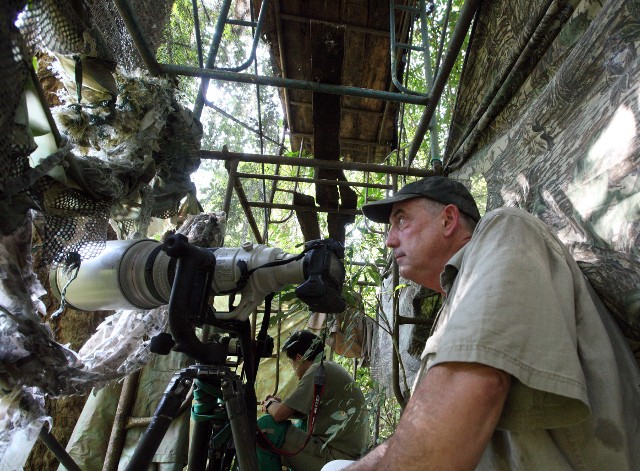
Our fruitful blind. Lots of waiting but it was absolutely worth it!
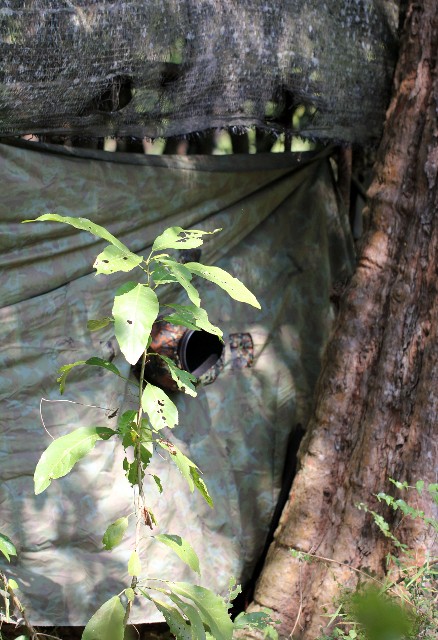
The leopard-view of our blind.
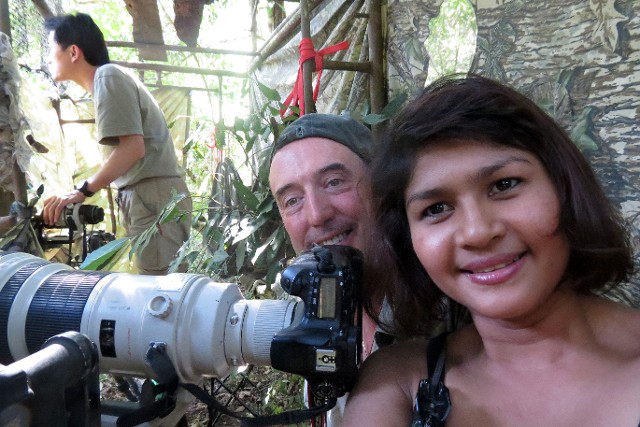
I am SO lucky to have a wife who can wait in blinds like Som!
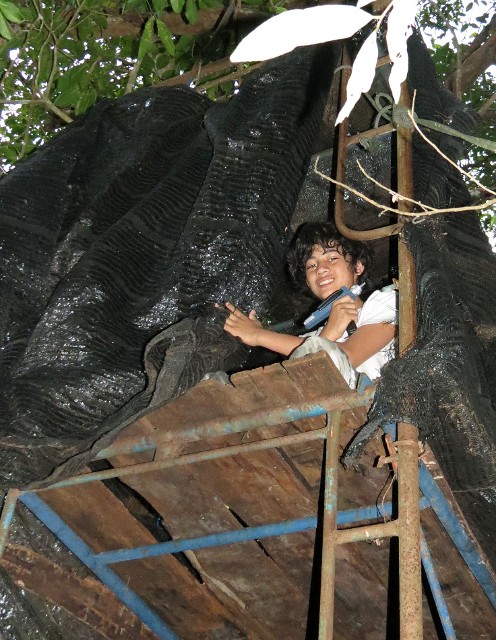
Cokie got the second floor to himself. He did pretty good keeping quiet. Considering how most 12-year old kids would handle the task of waiting patiently in a blind for 5-6 hours!
Thick-billed Pigeon (Treron curvirostra)
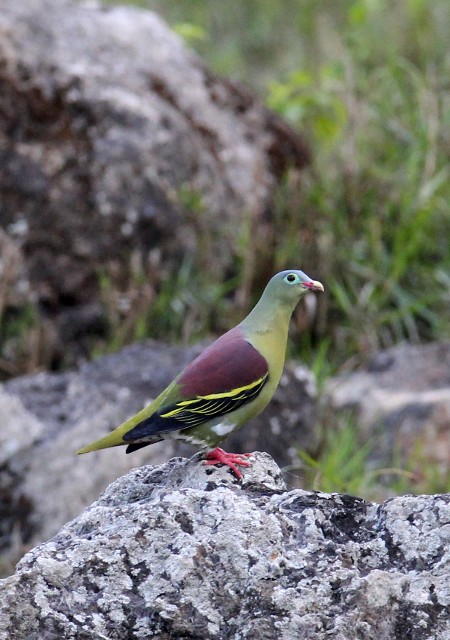
Initially all we saw in the lick was a heap of Thick-billed Pigeons!
The first couple hours
were pretty quiet, with only one nice Sambar stag coming in for a bit of a
drink from the waters of the hot spring.
He was extremely nervous which basically told us that either there was
lots of poaching in the area or that there were loads of predators. I was hoping for the latter. Not much after that male Sambar for some time, with the exception
of a female Sambar, and some birds.... . Much of the time spent during blind shoots is
simply waiting, waiting and more waiting.
Over the years, however, Bruce had spotted many different species so we
knew our chances were good for something.
But things were about
to change. And astonishingly, about five hours or so in
to our time in the blind, I heard Som say, "Leopard"! I was actually a bit sleepy so I was not sure
I heard her correctly. But as soon as I
scanned the distant edge of the lick, I knew she was dead serious. I spotted a glorious BLACK leopard skirting
the edges of the lick, just in range of my camera! He slowly entered our field of view. And after a few seconds of assessing the
area, he became confident enough to spend the next 35-45 minutes showing us
every view and angle and lighting situation imaginable! I have seen a lot of wild cats over the years
but this one will go down in our lore as one of the more photogenic and
cooperative individuals of all times!
Melanistic IndoChinese Leopard (Panthera pardus delacouri)
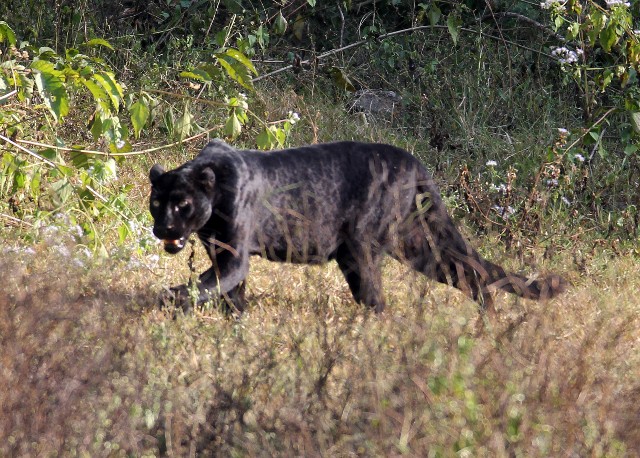
Our leopard on the prowl..
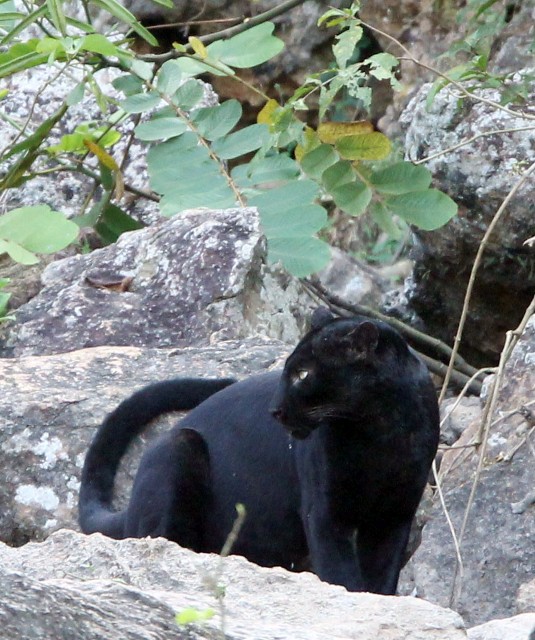
Indochinese Leopard
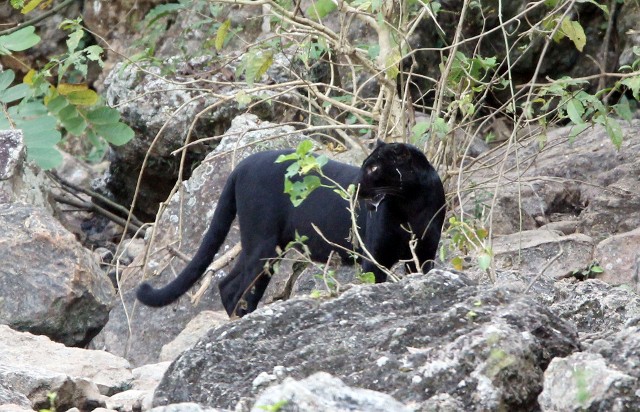
We were watching him drinking from the hotsprings for the better part of an hour.
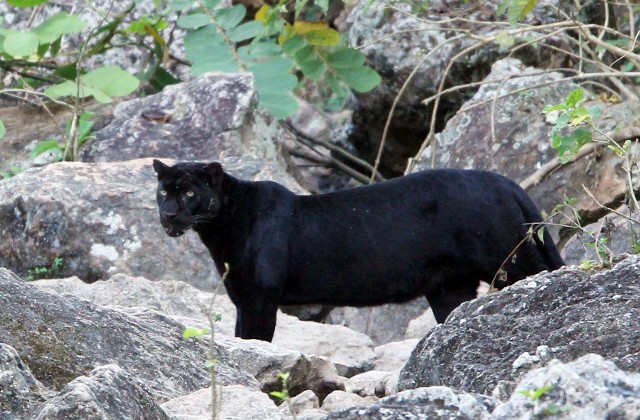
Spectacular
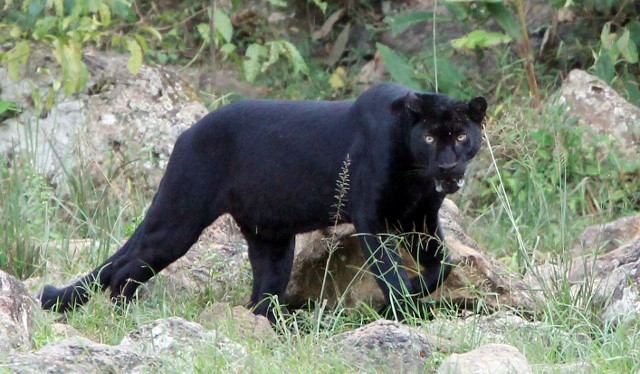
He knew exactly where we were.
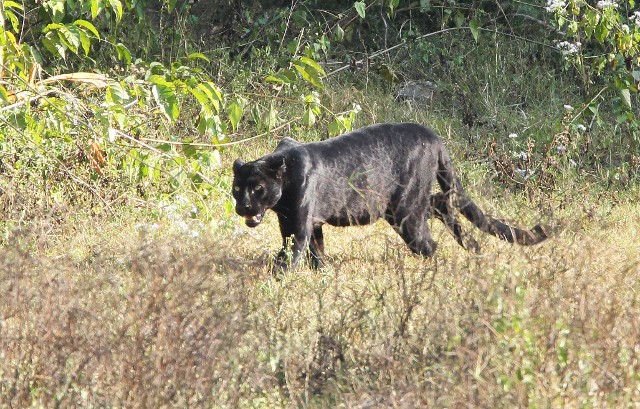
In the right light, you could see her spots very clearly.
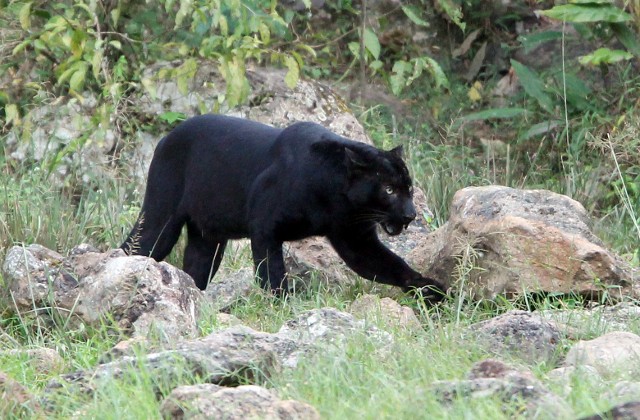
A spectacular felid.
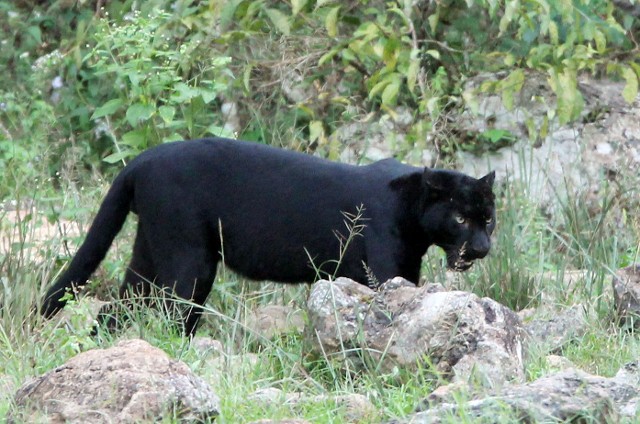
Words cannot do justice...
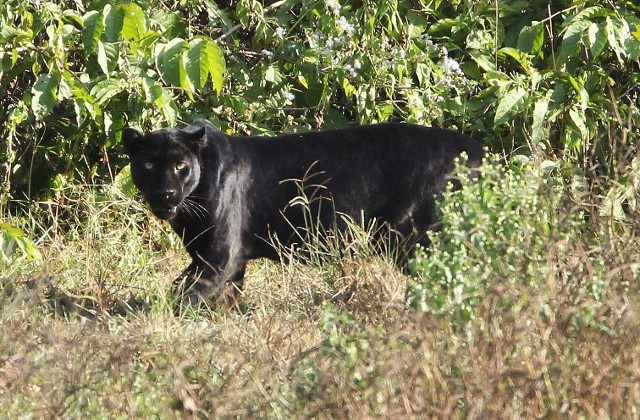
Staring directly at us...
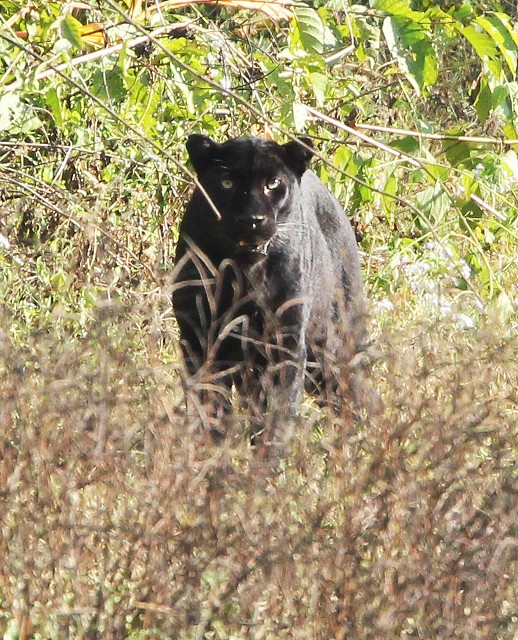
Making eye contact!
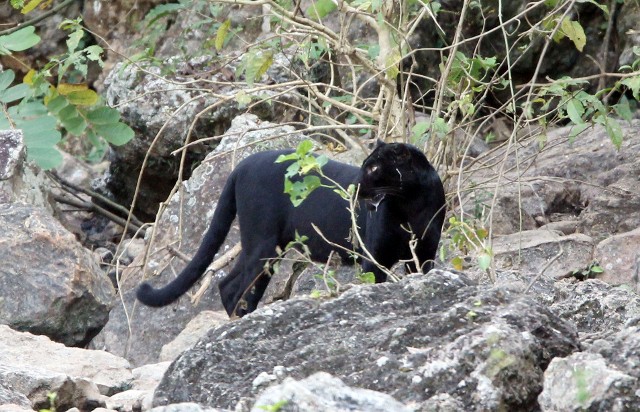
I will never forget our afternoon with this amazing animal.
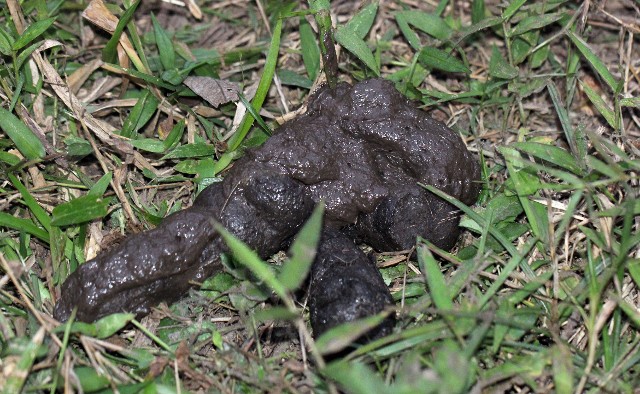
Sorry about this pic but....While we were quietly watching our show at the blind, barking deer were busy barking a couple hundred meters away...On our way back we spotted this rather large scat with pugmarks of a large adult and at least one cub. Based on the size of the scat, we are thinking it was a mother tiger and her cub!
Now I had seen
Bruce's unbelievable images of black leopards in his books but I never thought
I would be so lucky as to see one for myself in the wild. And as luck would have it, this leopard was
in the exact same location as Bruce's first leopard that he spotted some 19
years earlier. We joked that this one
must have been a grandchild of his leopard.
This sort sighting
would be next to impossible to ever repeat.
Bruce spends an inordinate amount of time in the Western Forest Complex, both
setting up camera traps and sitting in the numerous blinds that dot the
reserve, and he has seen Black Leopards only a few times in over twenty
years. He's seen SE Asian Tigers even
fewer times, although his camera traps capture them fairly regularly. In fact on this trip, we helped Bruce take
down several traps for relocation, and on this run, he captured two separate
individuals traveling the so-called "famous log" that has been the
site for so many amazing images and videos over the last couple years. (See some of Bruce's camera trap images here)
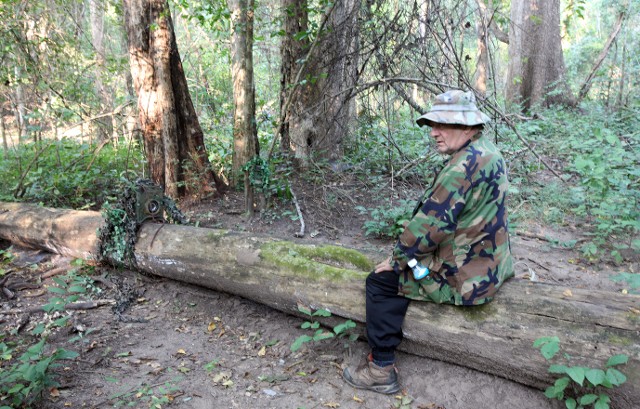
Bruce sitting on the "famous log". There probably has not been a more photographed log in the history of camera trapping. Oh the species captured crossing this dead tree...
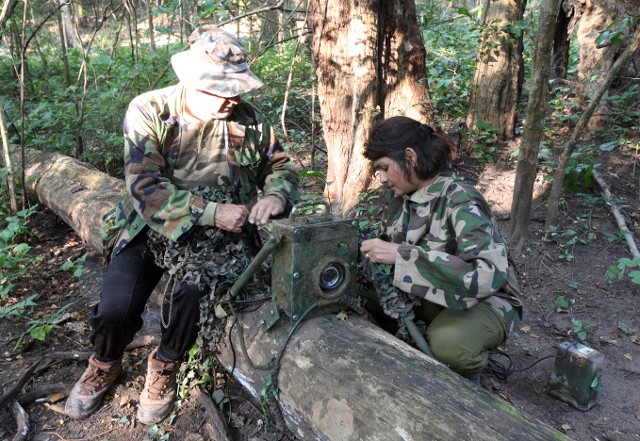
Dismantling the trap. Time to relocate!
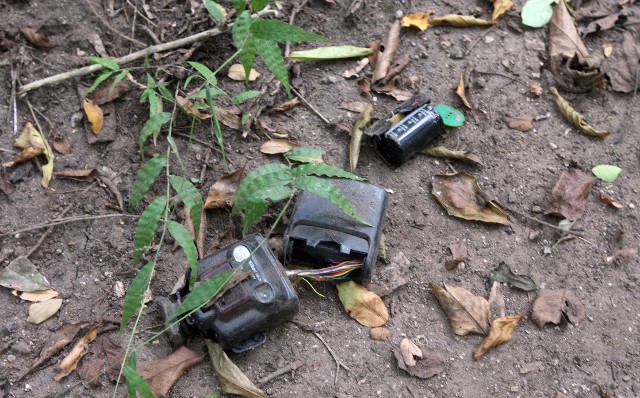
Evidently the elephants did not like the flash.... Bruce's traps are famously elephant-proof.
Along with the
tigers, Bruce's traps caught glimpses of Asian Elephants, several Hog Badgers,
some Common Civets and a nice pair of Bush Porcupines. While a couple cameras either malfunctioned
or were disturbed (=mutilated) by pissed off elephants, it appeared to be a
successful session of camera trapping.
There is little doubt that Bruce is the world's best camera trapper with
more success in getting extremely high quality images of such rare species than
anyone else in the field.
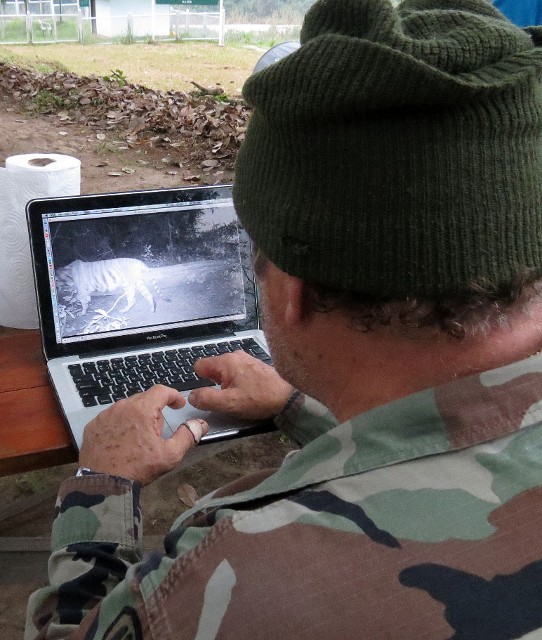
One of the amazing shots Bruce got during this trip! Two individual tigers were captured by the traps.
Our next day was
spent returning to the Headquarters area of the reserve where we spent time
photographing the numerous species of cervids now found in the Western Forest Complex. Sambar and Red Muntjac have
always been common and easy to see in the reserve, but over the past couple
years, there have been reintroductions of Eld's Deer, which used to be found in
the region before their extirpation. But
interestingly, there has been a move to introduce Hog Deer in to the park and
evidently that is a true "introduction" as they were never native to
this part of Thailand. Not sure what is
going on here. In any event, it was nice
see the herds along with the fully antlered males.
Burmese Eld's Deer (Panolia (Cervus) eldi thamin)
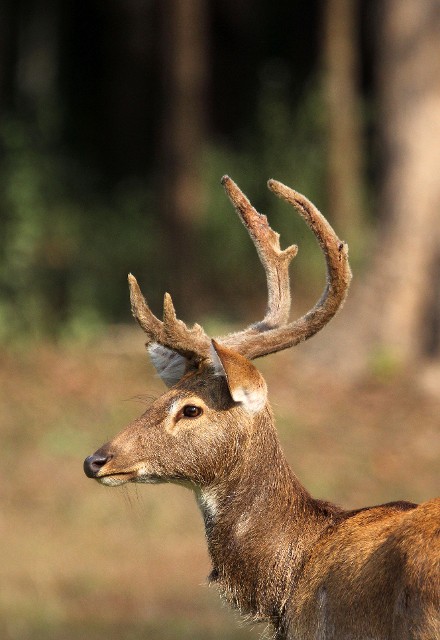
One of the numerous Burmese Eld's Deer roaming the grounds near the headquarters of the Huai Kha Khaeng section of the Western Forest Complex.
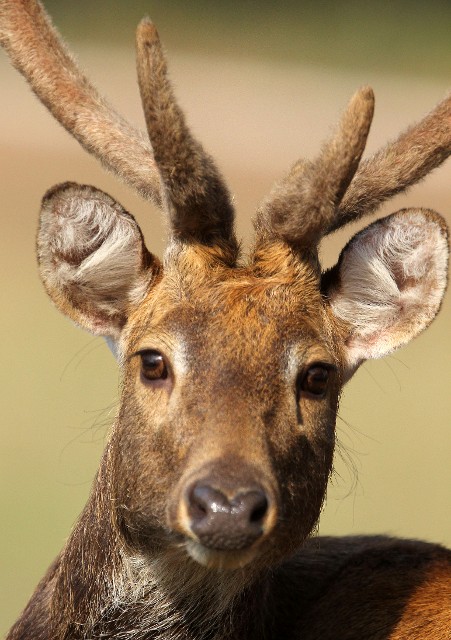
On the surface it seems that the introduction has been successful.
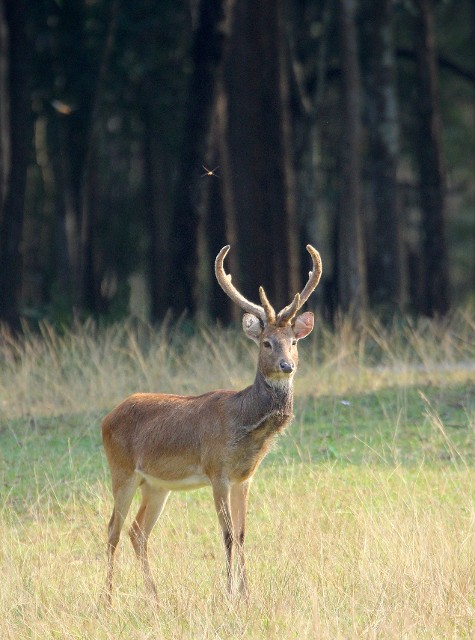
This species is easy to spot in the grassy areas near the headquarters. Evidently this is where they seem to always be since their reintroduction three or so years back.
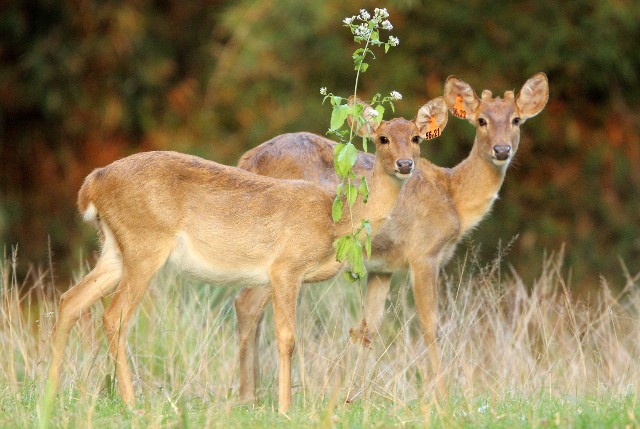
Most of the deer wear these tags.
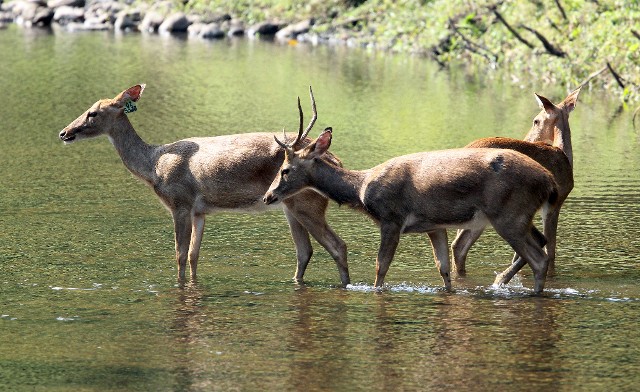
Burmese Eld's Deer crossing a stream near the campgrounds of the Huai Kha Khaeng section of the Western Forest Complex.
Indochinese Hog Deer (Hyelaphus porcinus annamiticus)
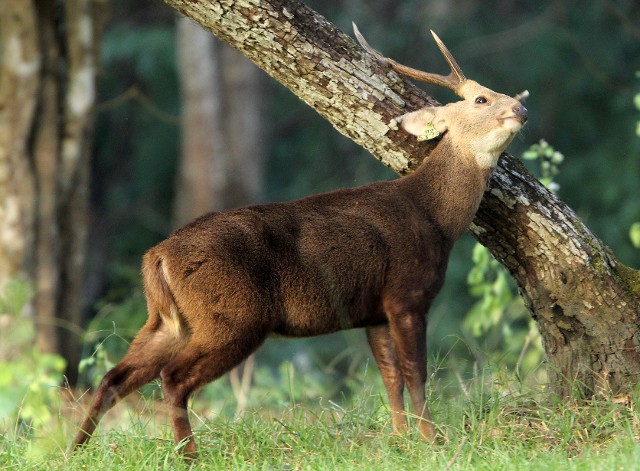
Interestingly this species is an actual "introduction". Evidently Indochinese Hog Deer were never actually found in the Huai Kha Khaeng section of the Western Forest Complex.
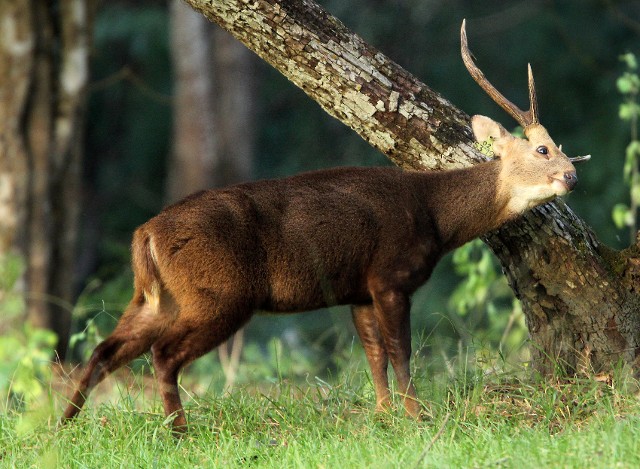
This subspecies did appear a bit different than the Indian Hog Deer (H. p. procinus) seen in Assam a couple years back.
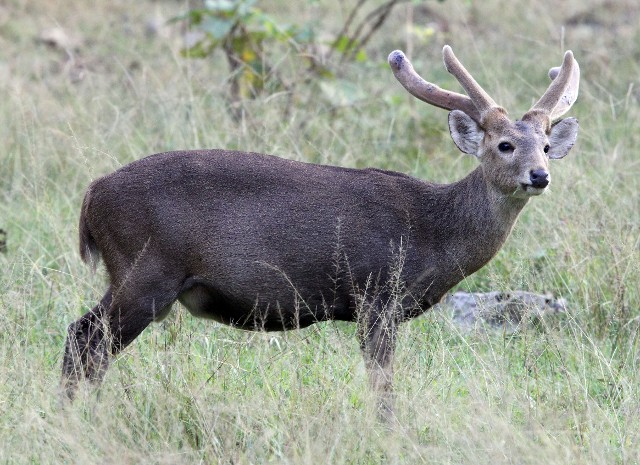
Some of the males were still sporting velvet.
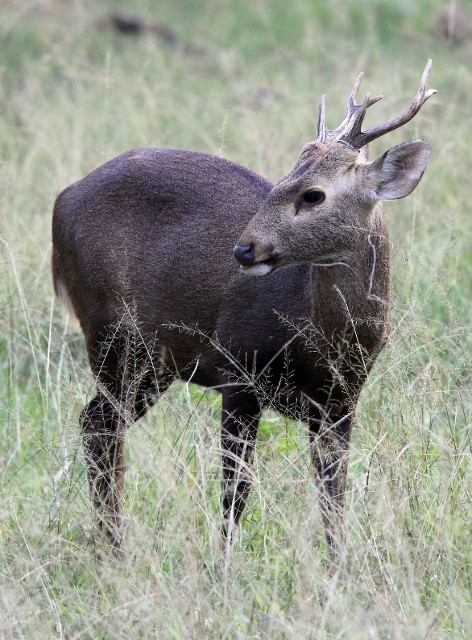
Indochinese Hog Deer
Indochinese Sambar (Rusa unicolor cambojensis)
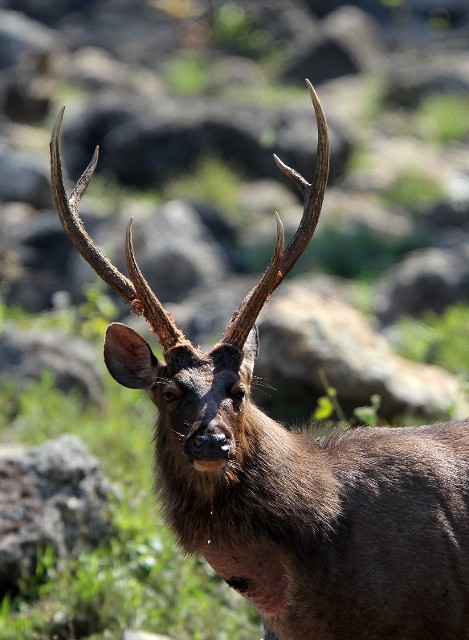
Sambar were farely common the Western Forest Complex, but this stag was quite spectacular in the mineral lick.
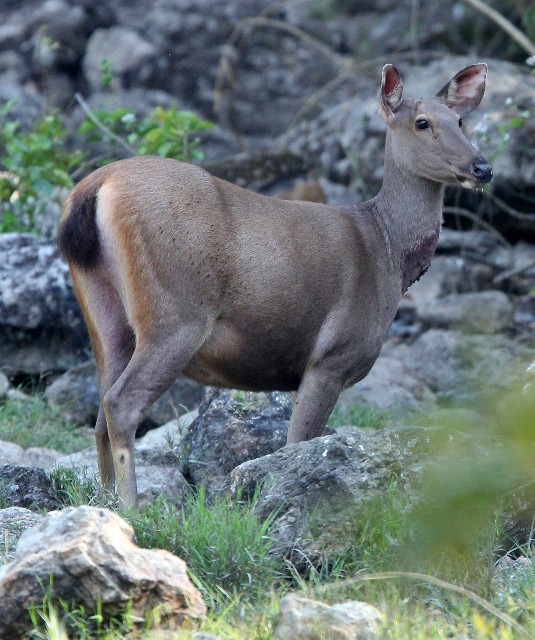
I have still not heard an acceptable explanation for the sores on the lower necks of the Sambar here in Thailand. This is not universal in this species.
Thailand Red Muntjac (Muntiacus muntjak curvostylis)
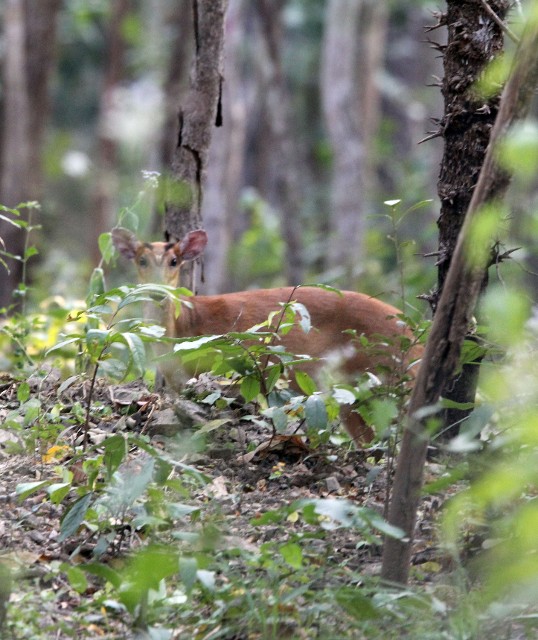
As usual, the Muntjak were timid and uncooperative for photography. But they were fairly common in the reserve and spotted several times in several locations.
Our day was
productive but our night camping near the HQ produced a couple interesting
species. While setting up camp, I
noticed a pair of eyes that appeared to be a predator's peering in my direction
from the forest edge. With a good look
through the binocs, I noticed it was a Golden Cat! He spent a few moments with us before heading
deeper in to the forest again. But hot
on his tracks was a pack of Golden Jackals, similar to the ones we'd seen here
a few years back. Normally it is easy to
see Siamese Hares in the camping area but we did not this evening, although we
were not looking too hard. Flying
squirrels are generally easy to spot in the forests around the campgrounds too.
Our final day in the
Headquarters region of the reserve was spent helping Bruce relocate some of his
camera traps in a patch of lowland mixed deciduous forest that was nearby. The forest here appeared to be primary in
stature and was riddled with wildlife trails with an astounding abundance of sign. The well-worn trails in the forests were
veritable superhighways for the wildlife of the forest. It was no wonder that Bruce had achieved such
high levels of success over the years with his images.
On approaching the
final trap a few hundred meters deeper in to the forest, we noticed an orangish
silhouette between a couple trees in the distance. Soon it became clear that there was a massive
bull Banteng drinking at a water hole.
We approached slowly and managed to capture a few images before he
noticed our presence and wandered slowly back in to the forest. He was a massive old bull that had no doubt
seen a lot of action in this old forest. What a treat it was to spend a few
moments with him this afternoon.
Banteng (Bos javanicus lowii)
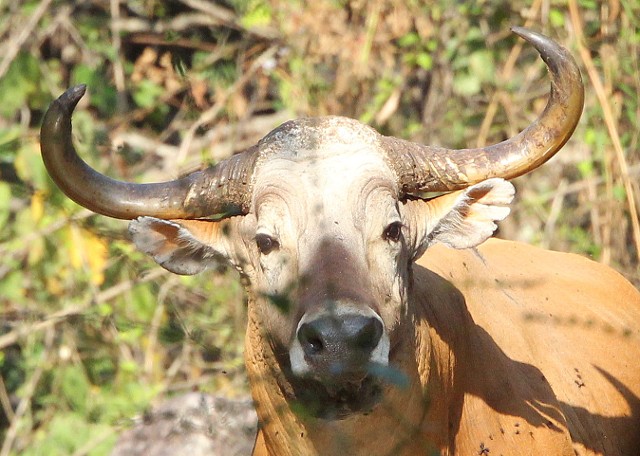
Our final glimpse of our Banteng bull. He had a straight on glimpse of us and simply strolled back in to the forest.
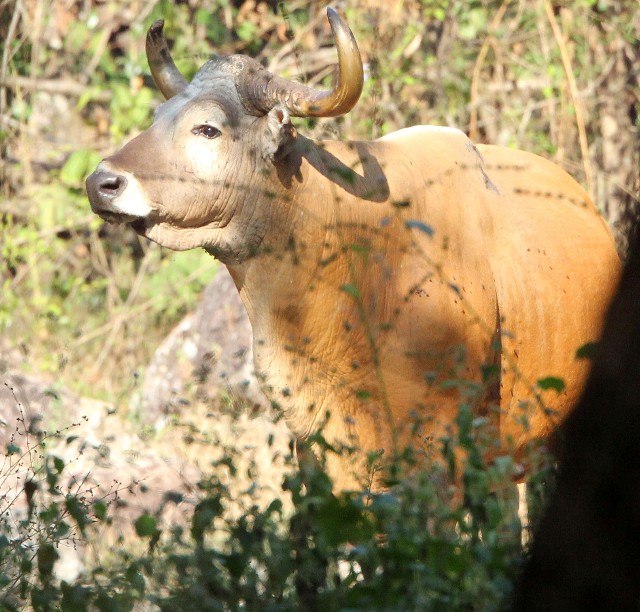
Our bull trying to catch our scent. He knew we were somewhere but simply could not peg our position.
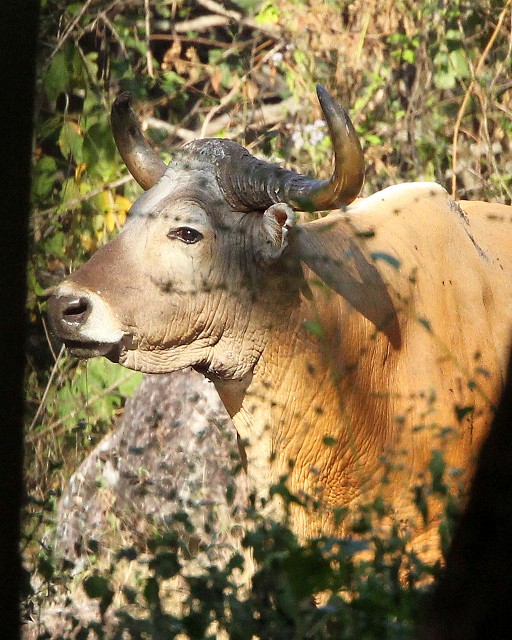
Indochinese Banteng
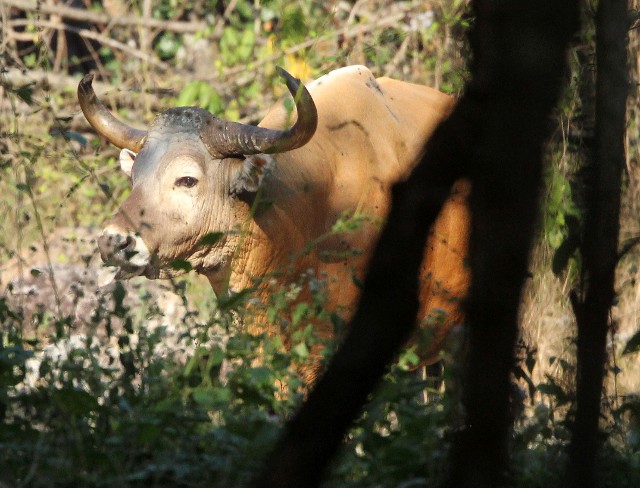
Banteng
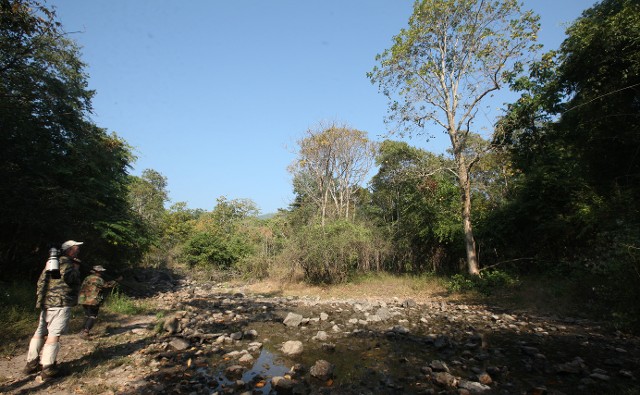
After our giant bull Banteng left, we had a chance to check out the mineral lick. Bruce plans on putting a few traps there in the future. I cannot imagine what sort of action he will document here in the near future!
Our next destination
was Khao Ban Dai Station, over 100 kilometers to the south on the southern
boundary of the the Western Forest Complex. Som and I had
attempted to visit this station several years back but ended up getting
hopelessly stuck in the mud and had to turn around. So it was nice this time to see that the road
had been improved considerably and the approach was no problem at all. Of course this was the dry season and back
then we were foolish enough to try it in the wet season, but we made it this
time no problem. And about 21.5
(exactly!) kilometers deeper in to the core area of the reserve, we found
ourselves in Khao Ban Dai, perhaps the most spectacular of all of the stations
of the Huai Kha Khaeng of the Western Forest Complex.
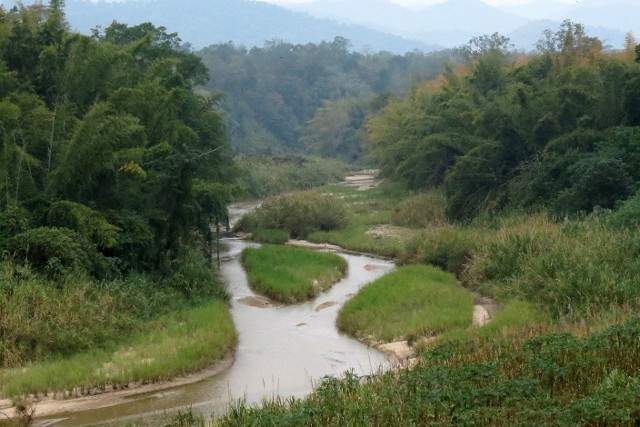
The river confluences at Khao Ban Dai. This was one of the nicest place I have ever visited in Thailand.
Situated on top of a
sizable mountain (sizable for this part of Thailand, where in the Western Forest Complex,
the tallest mountain is 1800 meters), offers sweeping views of the surrounding
ranges and forests of the region, with views of not only Huai Kha Khaeng, but
of portions of Tung Yai Naresuan East and West
Perhaps what is most spectacular is the views of the confluence of the
Huai Kha Khaeng River, where wildlife used to be plentiful and spotted
constantly. Sadly things have changed
and wildlife is much less commonly seen there, but the morning of our arrival a
few visiting dignitaries spotted two very rare wild Water Buffalo on the banks
of the river below. We spotted three
species of civets during our stay - the Large and Small Indian Civet as well as
the Common Palm Civets, which visit every evening.
Large Indian Civet (Viverra zibetha picta)
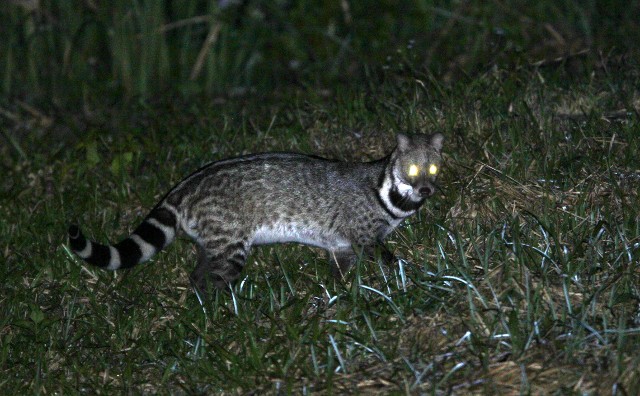
Finally an acceptable image of a Large Indian Civet from Khao Ban Dai Station. He and a couple of his buddies were patroling the station all night.
Common Palm Civet (Paraduxorus hermaphroditus)
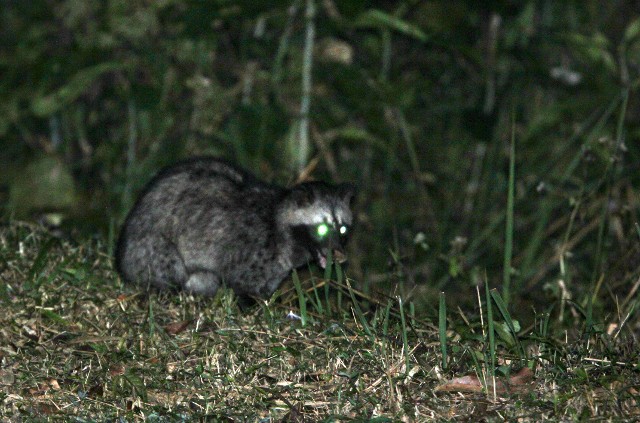
Common Palm Civet was another visitor at our camp this evening. We also spotted Small Indian Civet but was unable to capture an image.
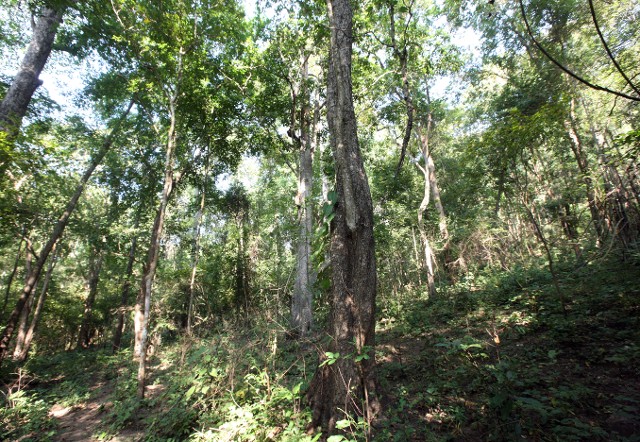
The mixed deciduous forest of Huai Kha Khaeng.
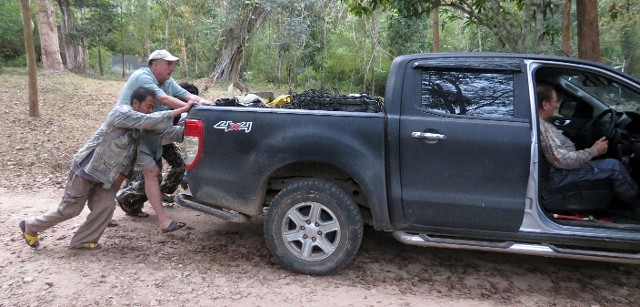
Just a reminder NOT to leave your computer charging overnight in your rig....50 kilometers deep inside the jungles of Thailand....
We spent the late
afternoon and evening of one day and the morning of another in Khao Ban Dai. This is definitely a place to try to return
to, although this would be quite impossible without Bruce. No one is allowed to come to this place
without very special permits. But at
least we got a taste of this amazing place, which I would arguably claim is one
of the most special places in all of Thailand.
Finding areas of true wilderness and solitude in Thailand now is
virtually impossible. Most of the parks
and reserves in Thailand have been reduced to amusement parks for drunken
tourists who have no respect for nature and have no desire to experience it in
any true sense. Unless you can visit
during an off time, there really is no point to even go to a Thai national park
anymore. The wildlife is heavily poached
and sold to the highest bidder in most reserves, and the missions of the parks
is to satisfy the typical Bangkok tourist whose only goal is to sing karaoke
and drink cheap whiskey until all hours in the campgrounds of the parks. The Western Forest Complex offers a rare glimpse of what
Thailand was not so long ago.
Mammal List (20 species)
Order
Rodentia
- House
Mouse
- Grey-bellied
Squirrel
- Burmese
Striped Squirrel
Family
Elephantidae
- Asian
Elephant
Family
Cervidae
- Eld's
Deer
- Sambar
- Hog
Deer
- Red
Muntjac
Family
Bovidae
- Banteng
Family
Viverridae
- Small
Indian Civet
- Large
Indian Civet
- Common
Palm Civet
Family
Felidae
- Asiatic
Leopard (Melanistic form)
- Golden
Cat
Family
Canidae
- Golden
Jackal
Family
Suidae
- Wild
Boar
Order
Scandentia
- Northern
Treeshrew
Order
Primates
- White-handed
Gibbon
- Phayre's
Langur
- Long-tailed
Macaque
More Leopard Shots!
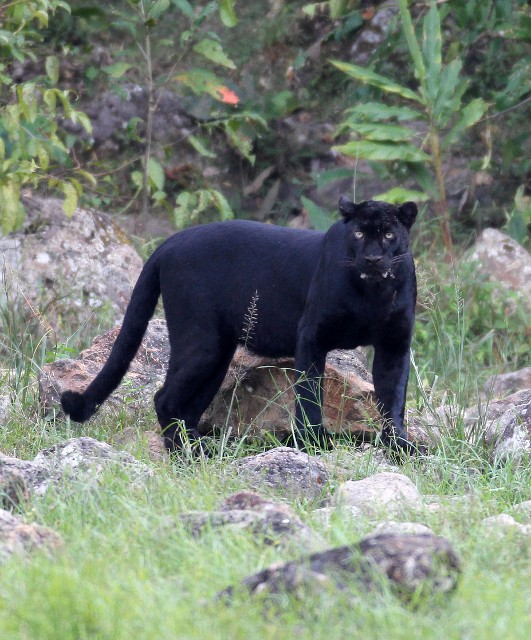
We were privileged to spend nearly an hour with this magnificent felid. Without a doubt, this was one our most amazing wildlife sightings ever.
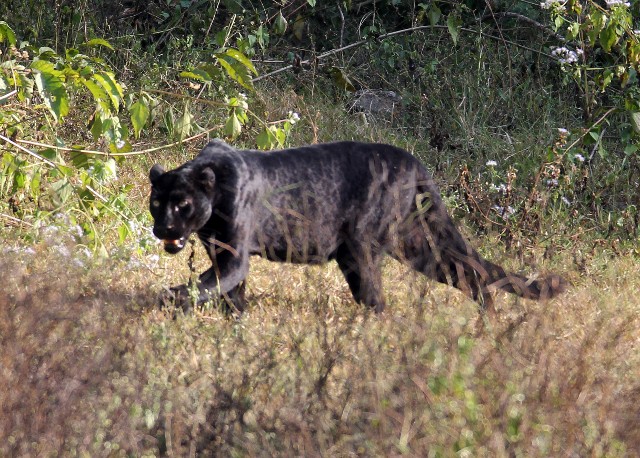
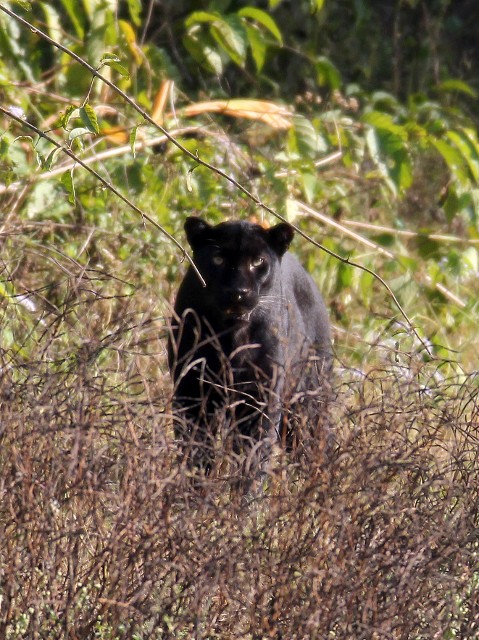
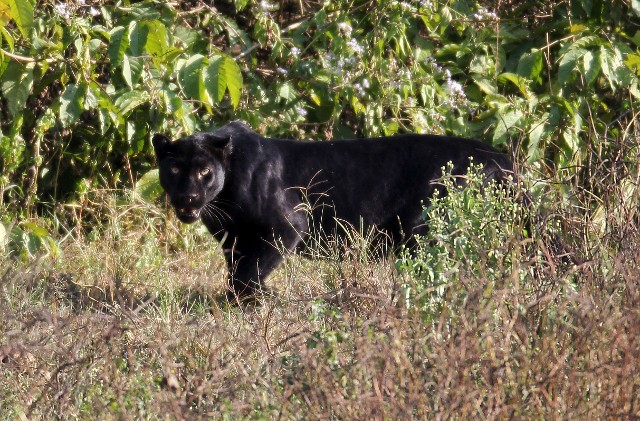
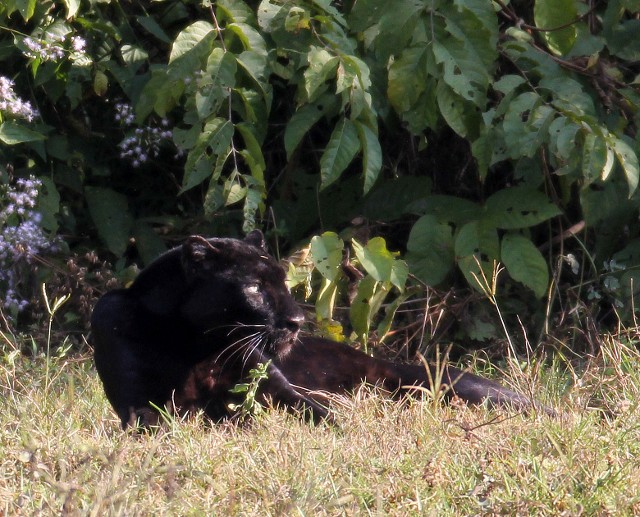
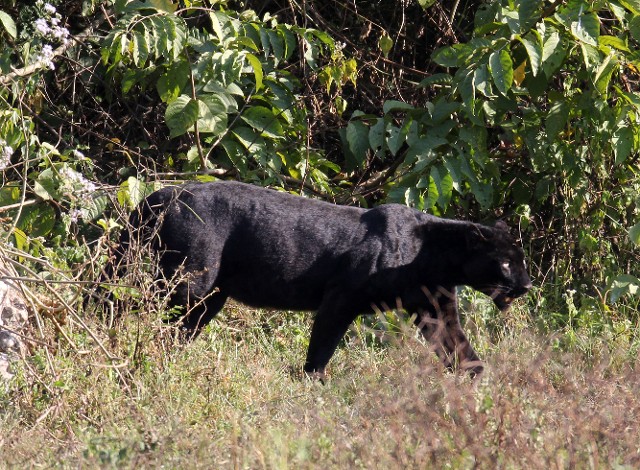
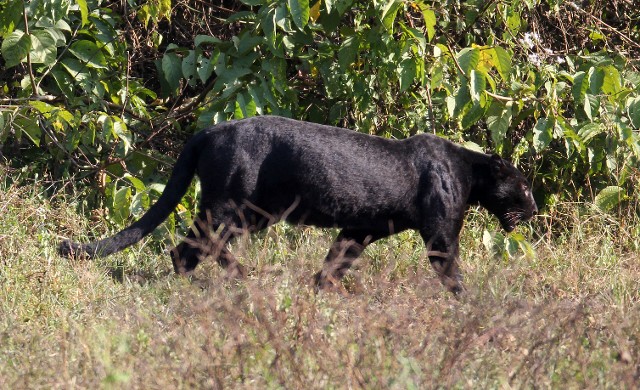
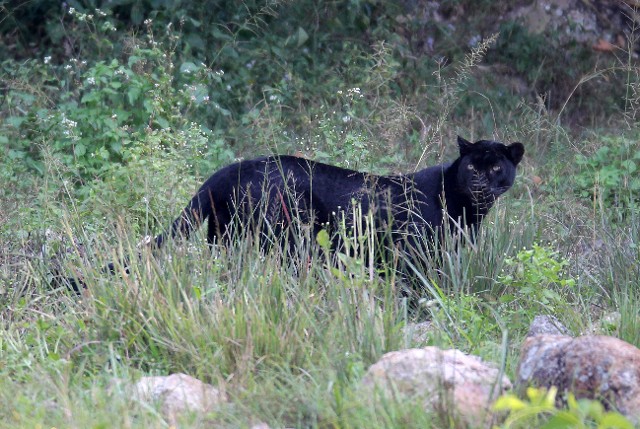
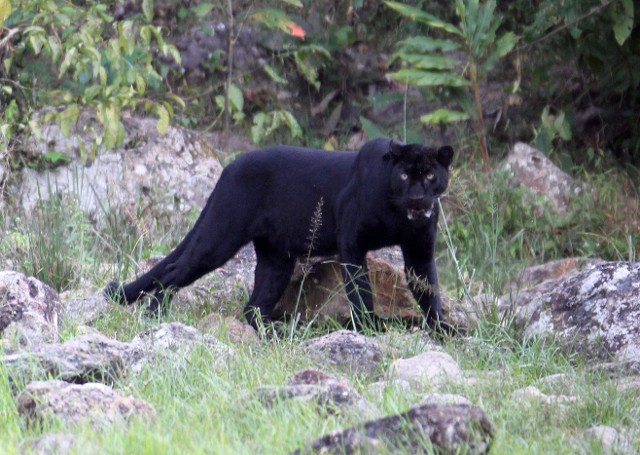
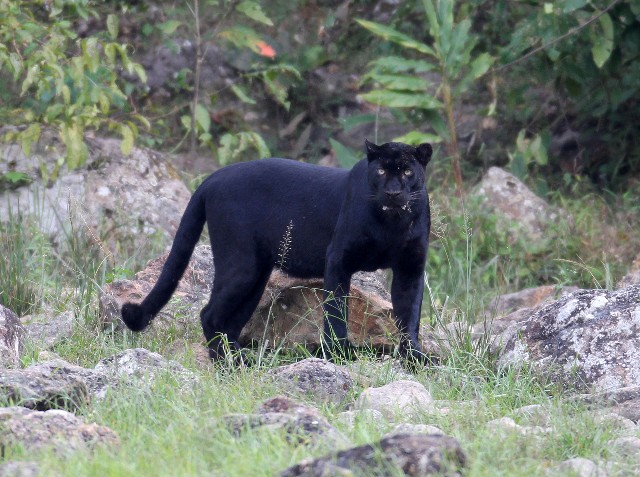
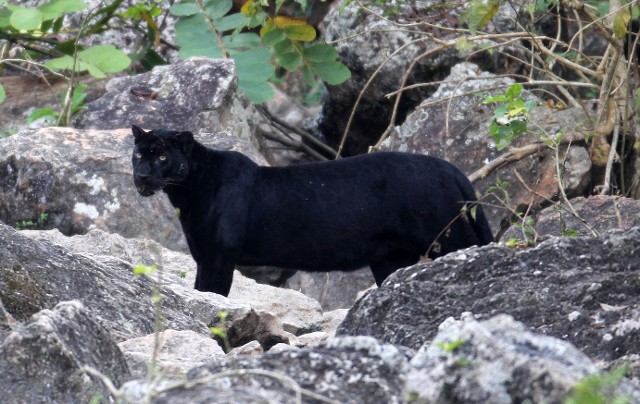
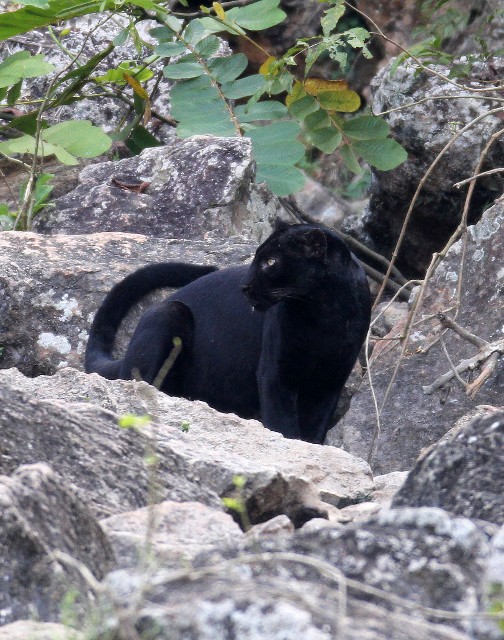
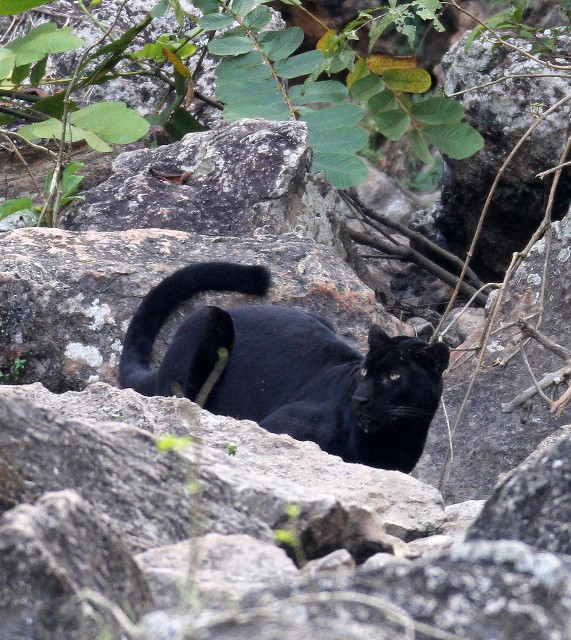
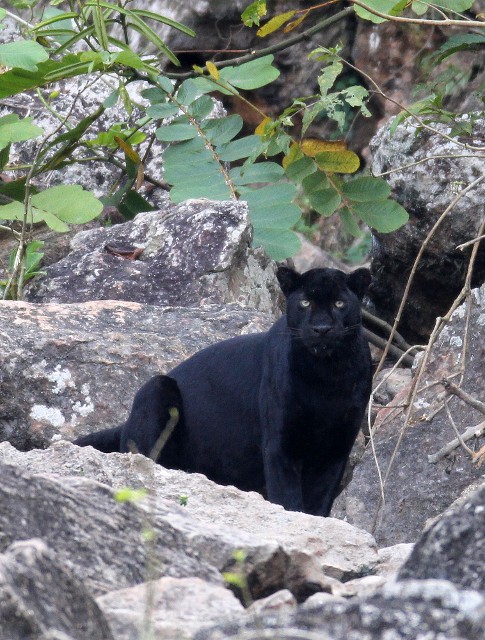
Amazing
Other Critters Spotted Recently
Lyle's Flying Fox (Pteropus lylei)
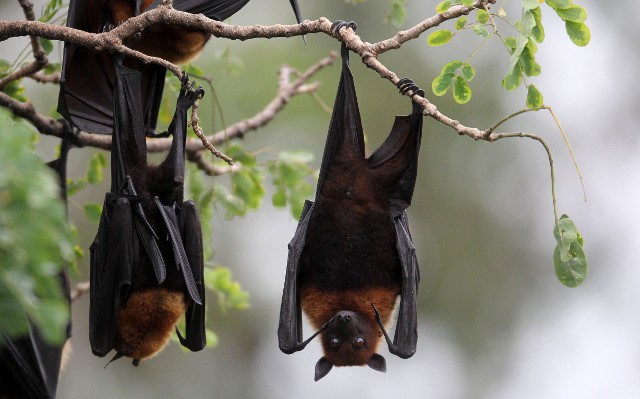
Just an hour or less out of Bangkok, there is a large roost of Lyle's Flying Fox at Wat Tha Sung Taksinaram Bang Sai Ayutthaya.
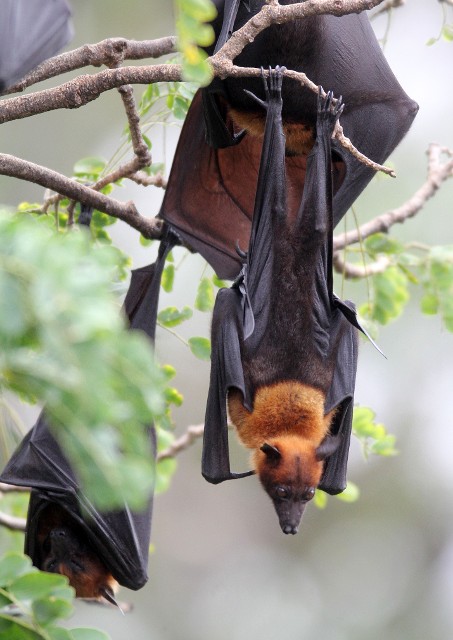
Situated near on the Chao Praya River the roost is more than likely one of the few remaining in the greater Bangkok area for sure.
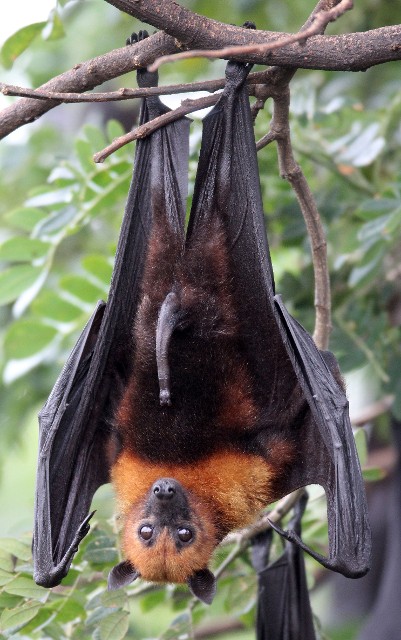
Impressive
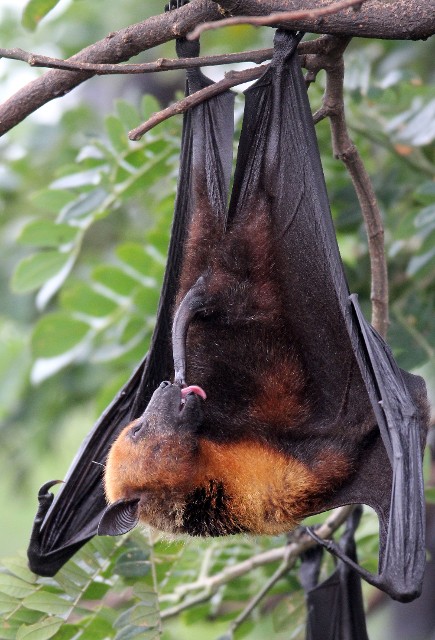
I know a good joke about this scene....
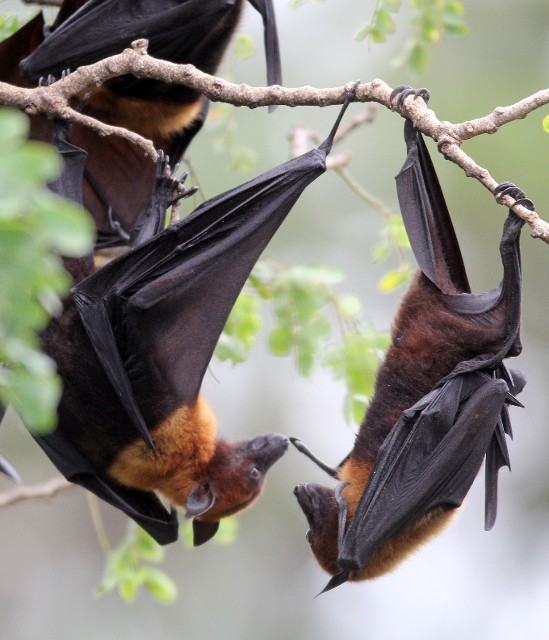
Very entertaining watching the non-stop squabbling in the roost.
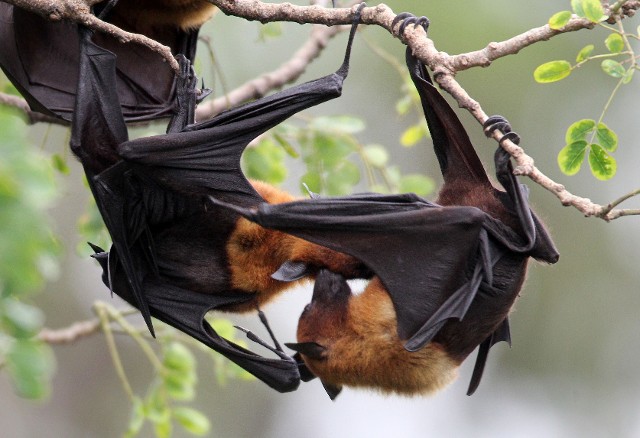
I cannot imagine how anyone gets any sleep in a bat roost...
Smooth-coated Otter (Lutrogale perspicillata perspicillata)
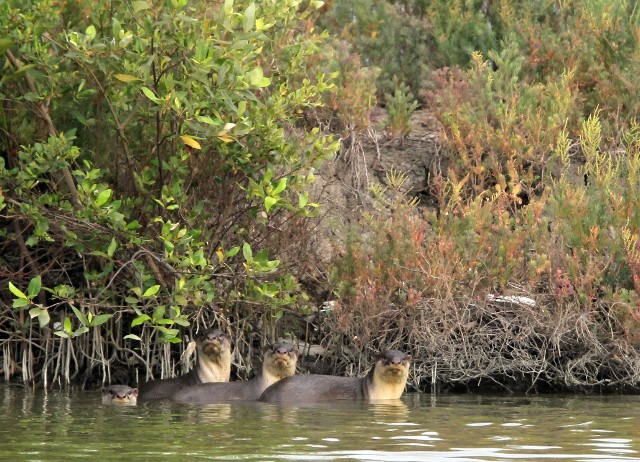
While wildlife-watching in Kok Kham Machachai we came across this small group of Smooth-coated Otters in one one of the fish ponds. Evidently they had not been spotted there in some time and this sighting created a bit of a stir in the local wildlife-watching community.
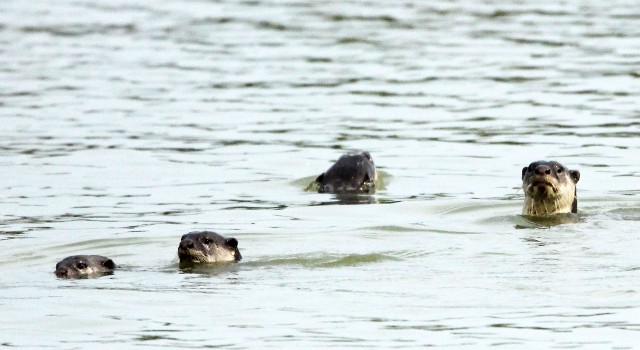
Smooth Coated Otters of Kok Kham Machachai
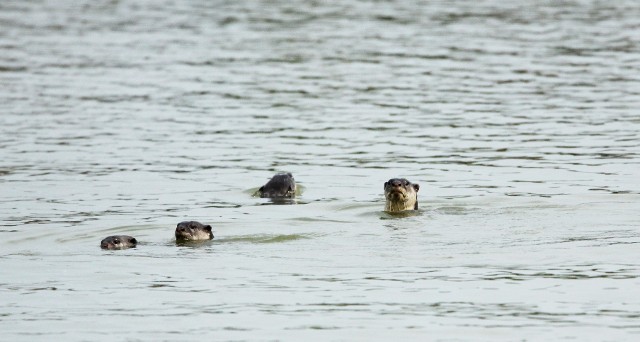
Smooth-coated Otters...
Birds of the Western Forest Complex
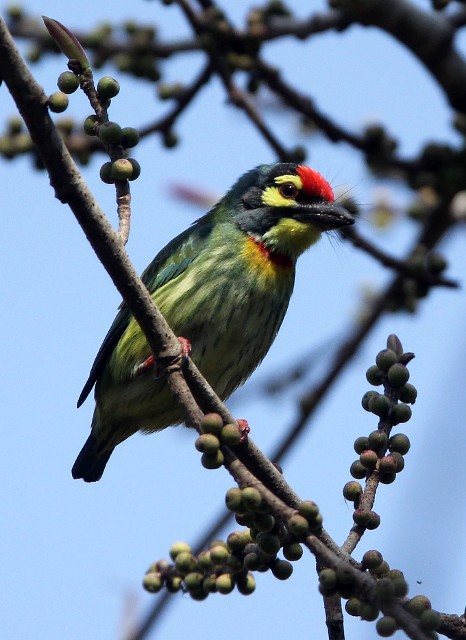
Coppersmith Barbet
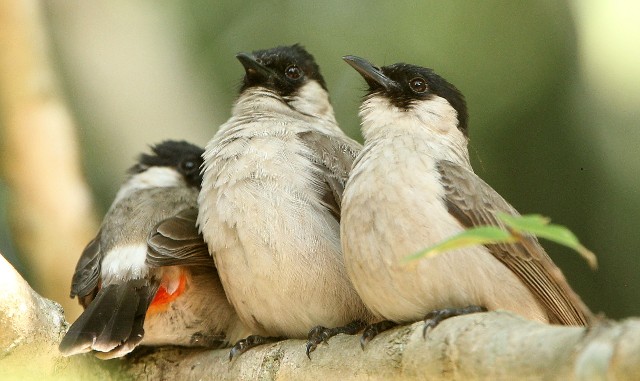
A mama Sooty-headed Bulbul and her fledglings.
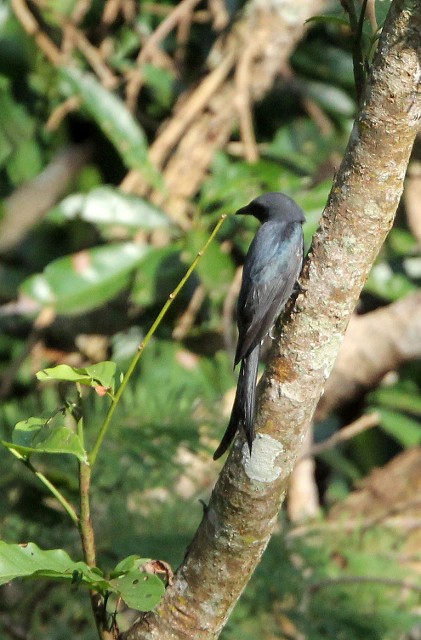
Ashy Drongo
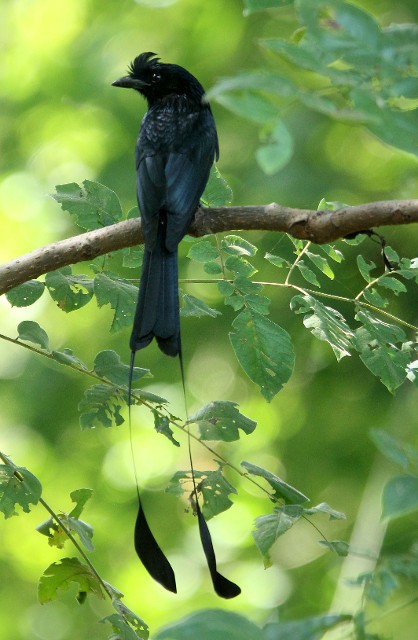
Greater Racket-tailed Drongo
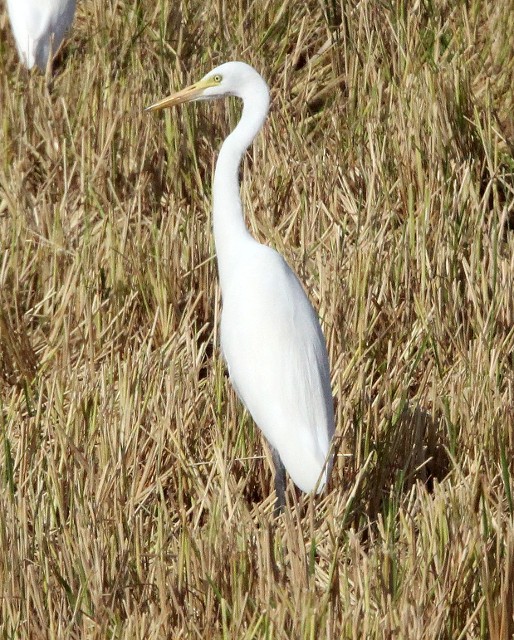
Intermediate Egret
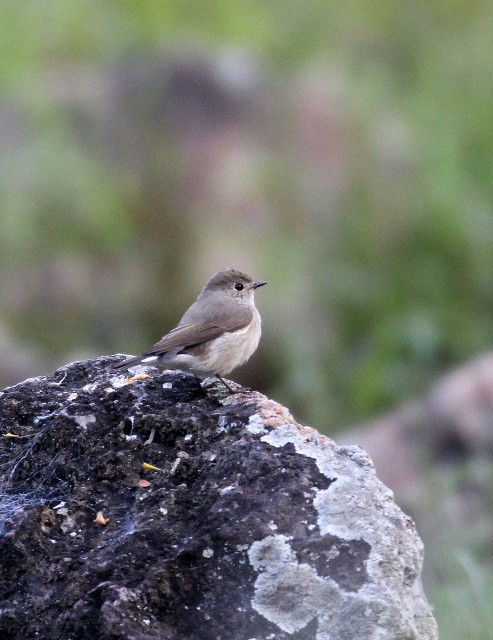
Asian Brown Flycatcher
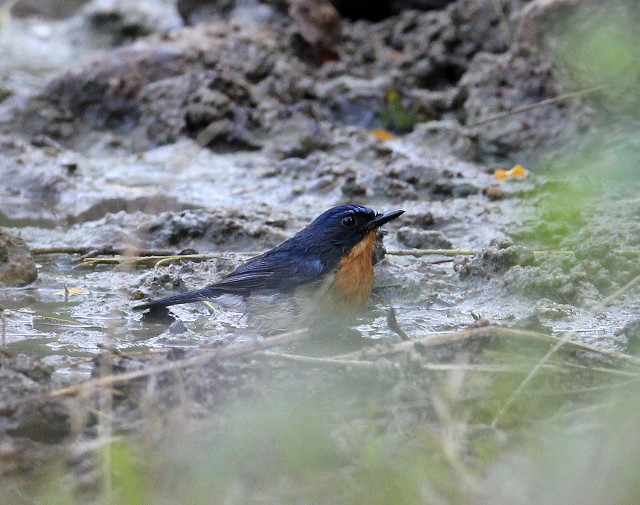
Blue-throated Flycatcher
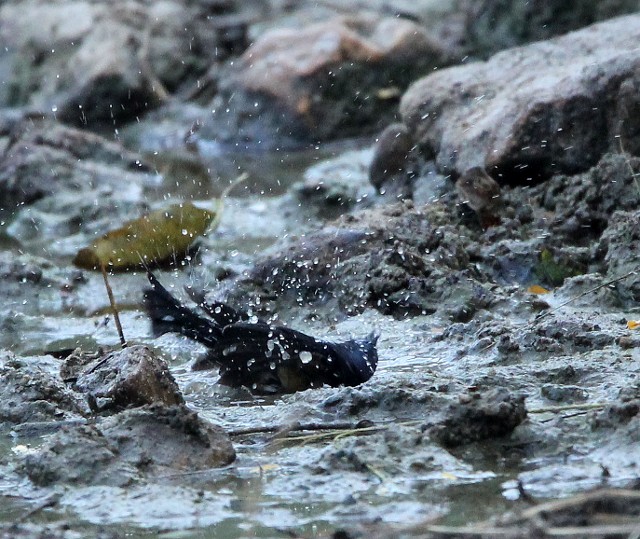
Blue-throated Flycatcher taking a bath at the hotsprings.
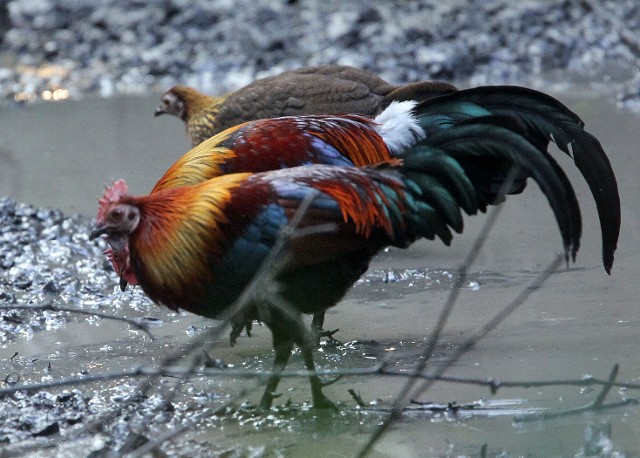
Wild Jungle Fowl
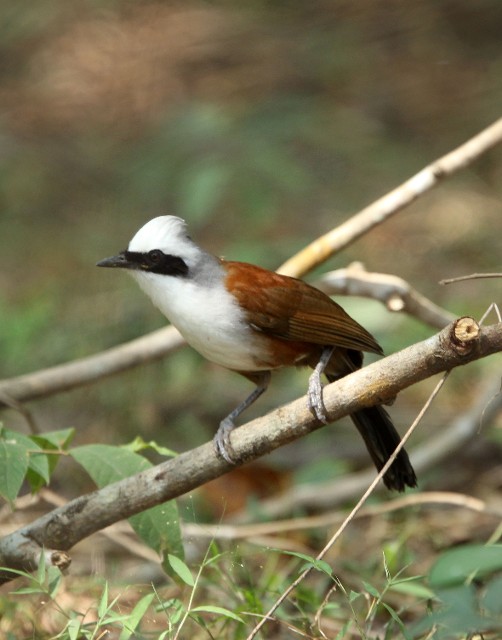
White-crested Laughingthrush
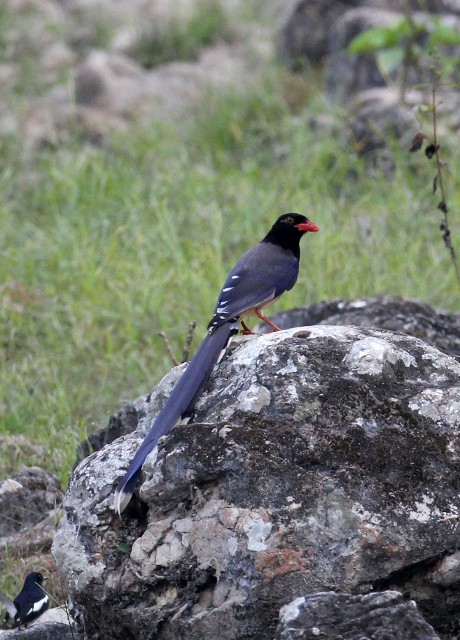
Blue Magpie
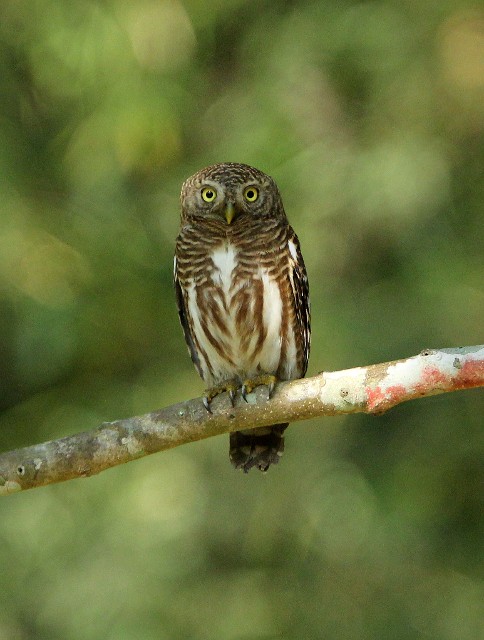
We caught daily views of this lovely Asian Barred Owlet at Kraprok Krapiyen. It was a lifer for me!
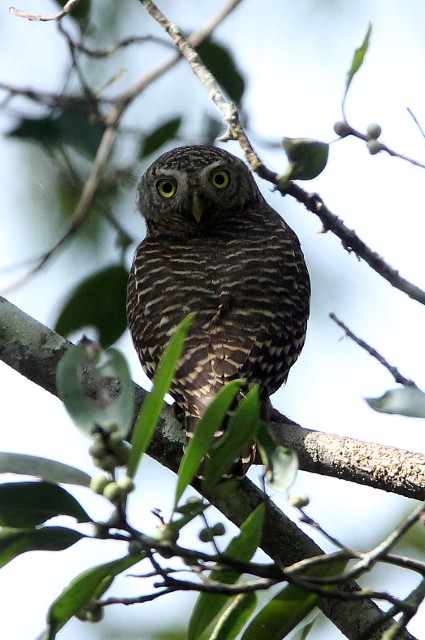
Asian Barred Owlet!
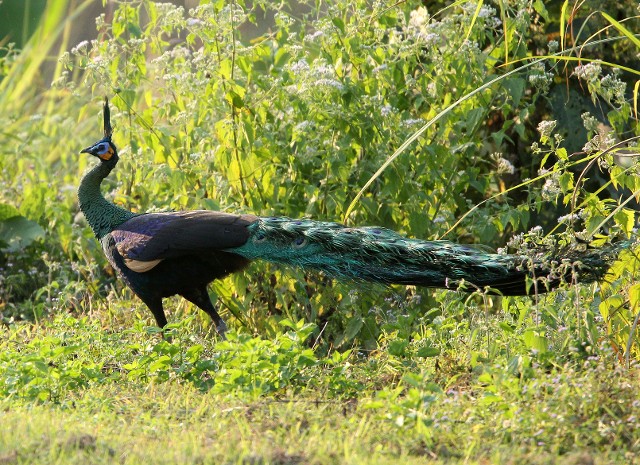
Wild Green Peafowl at Khao Ban Dai
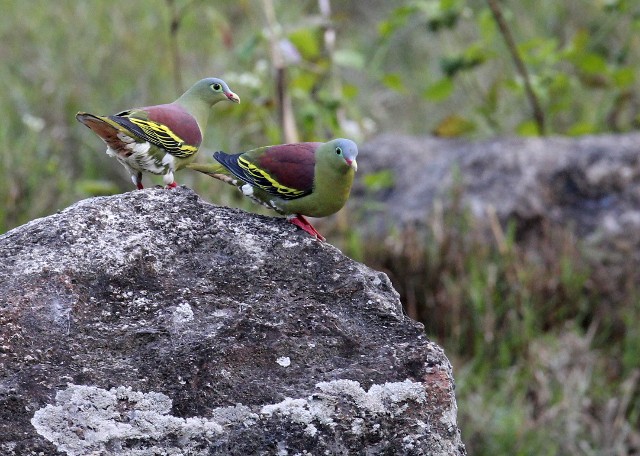
Thick-billed Pigeon
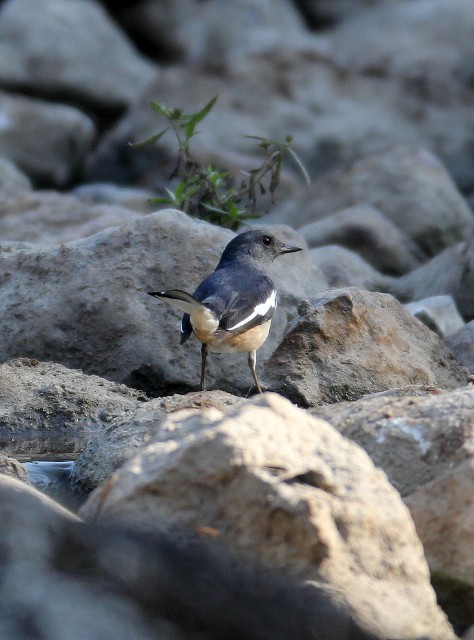
Oriental Magpie Robin
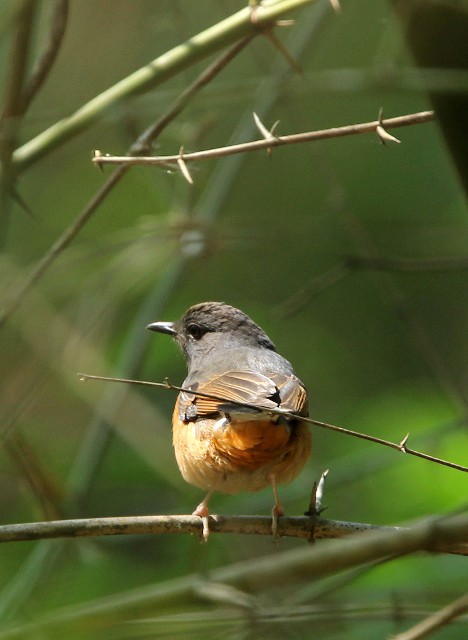
Another lifer for the trip - Siberian Blue Robin!
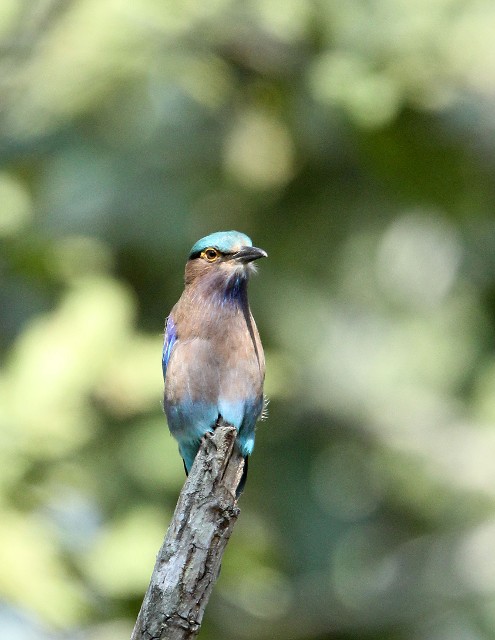
Indian Roller
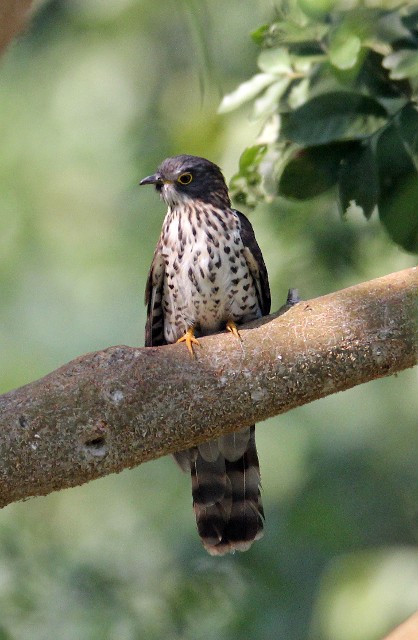
Common Hawk-cuckoo (Hierococcys varius)
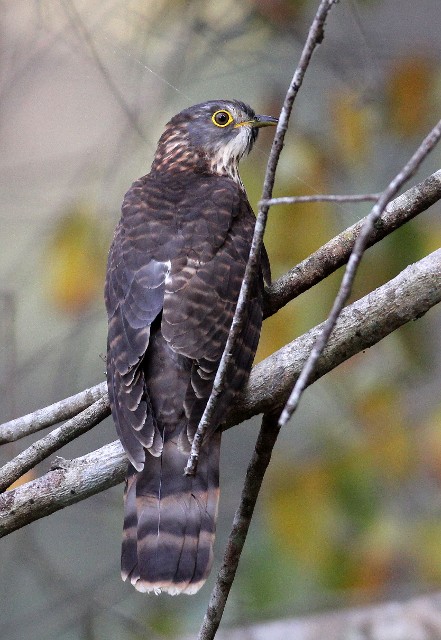
I love seeing the Common Hawk-cuckoos (Hierococcys varius) fly effortlessly through the understory of the forests.
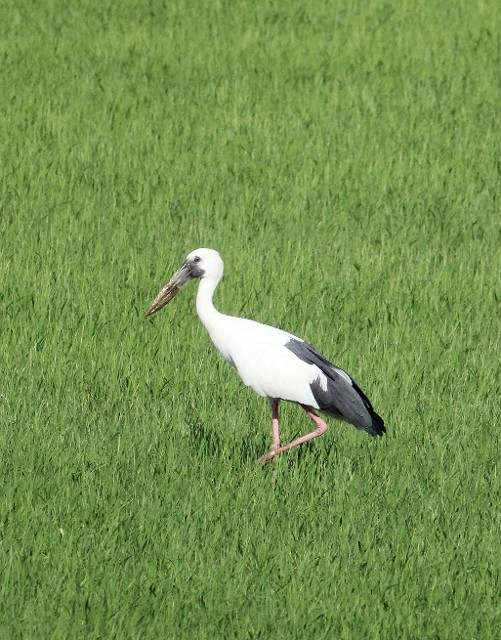
Spotted on the way to Huai Kha Khaeng - billions of Asian Openbills in the rice paddies of Uthai Thani Province.
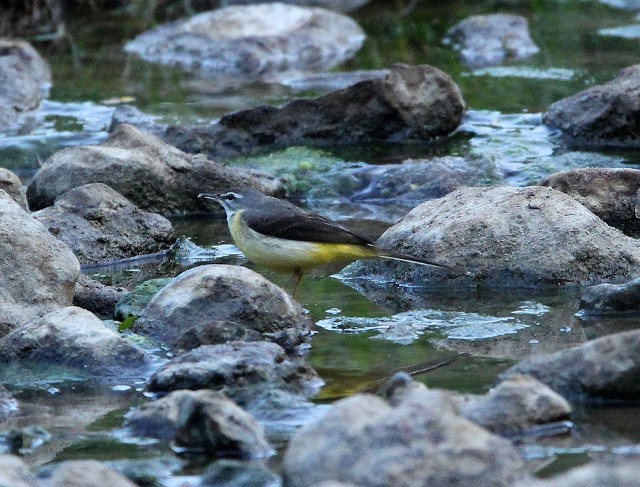
I have a difficult time with this group but I think this is a Yellow Wagtail.
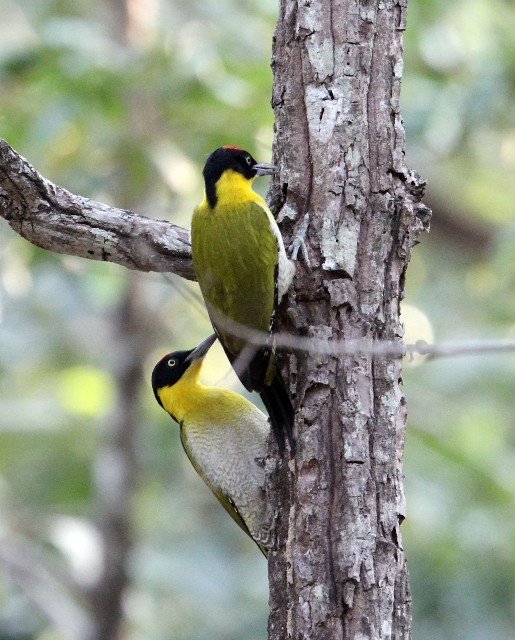
Dozens of Black-headed Woodpeckers were spotted in the mixed deciduous lowland forests of the Western Forest Complex. In some cases as many as five or more on one tree!
A Few Other Birds Seen A Few Days Before the Western Forest Complex (and no other blog to post them)
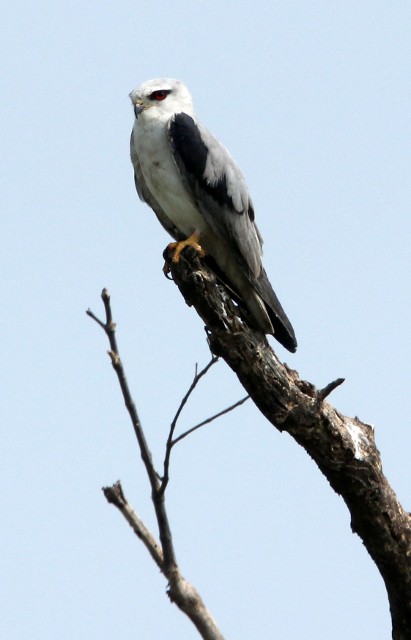
Black-shouldered Kite in Kok Kham Machachai.
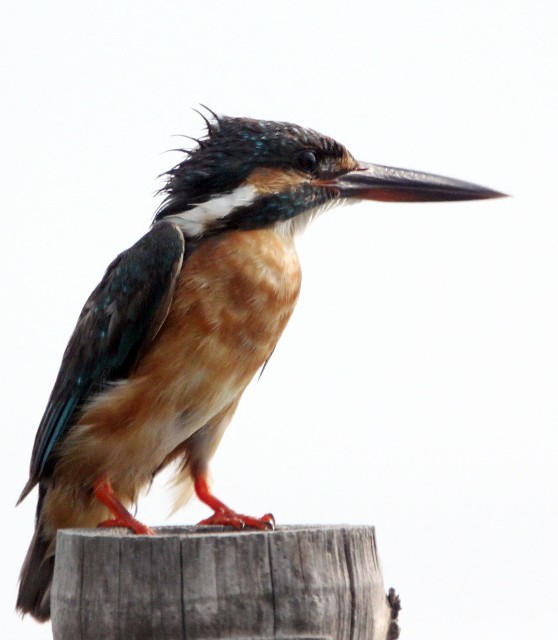
Common Kingfisher
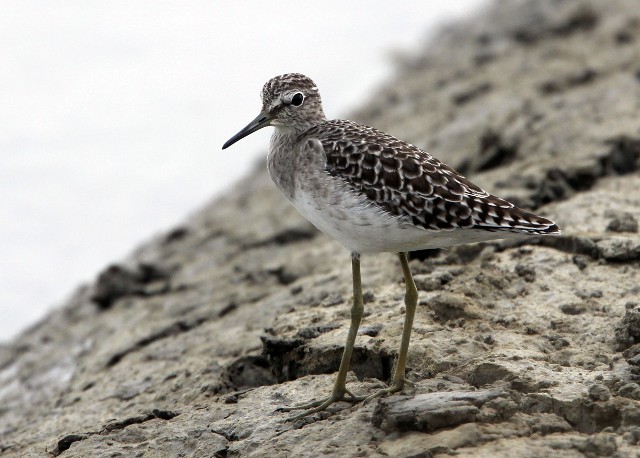
Wood Sandpiper
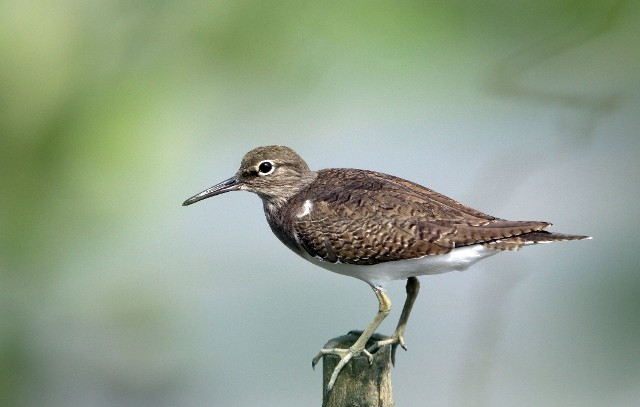
Common Sandpiper
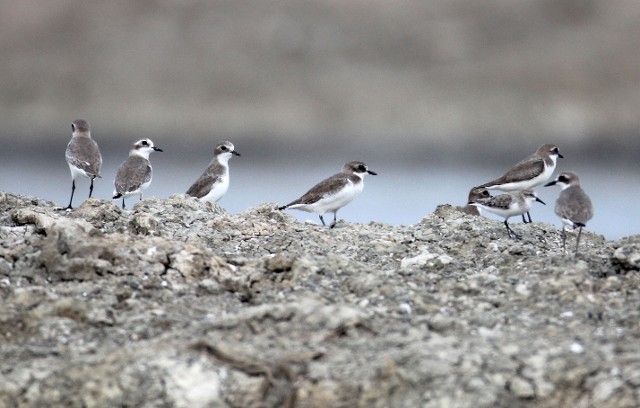
Lesser Plovers
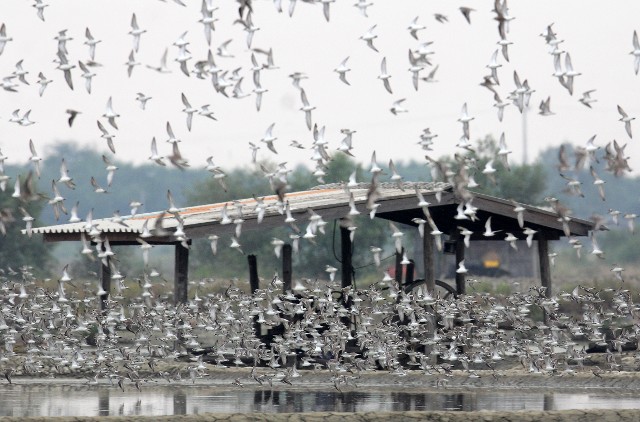
Mixed flocks in Kok Kham Machachai
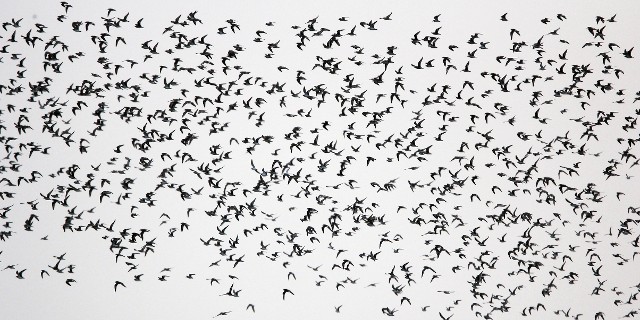
Lot's of Stints, Dunlins, Sandpipers and more....
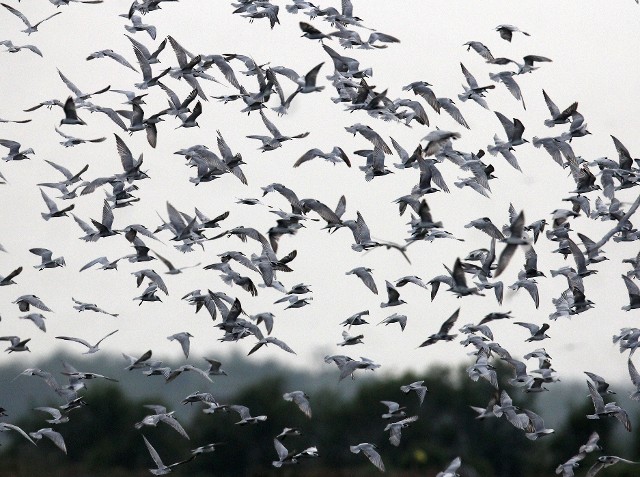
Somewhere in this mixed flock there is a lone Spoonbill Sandpiper!
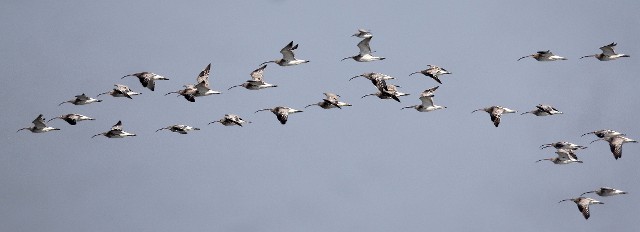
Eurasian Curlew flock near Liam Pak Bia.
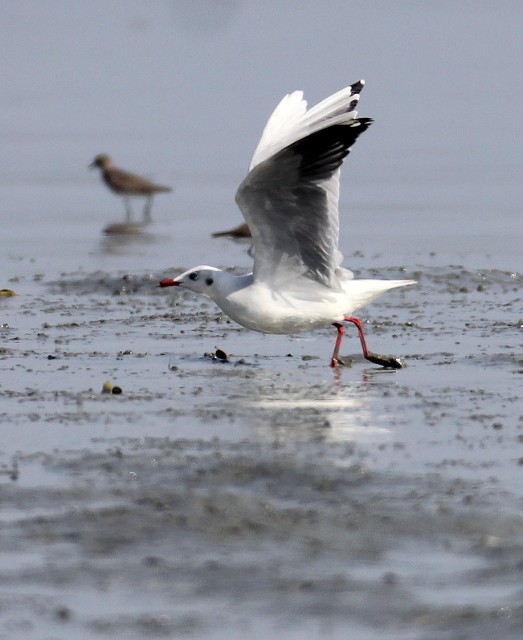
Brown-headed Gull
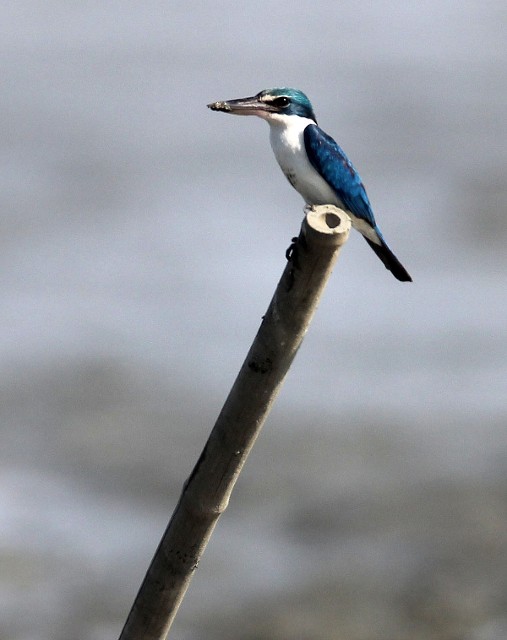
Collared Kingfisher
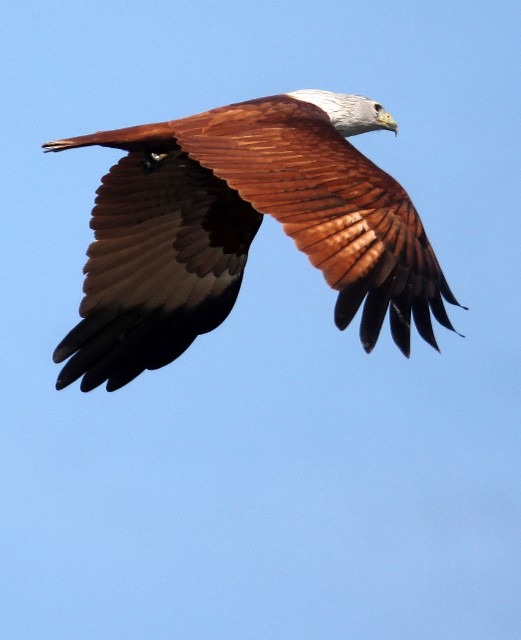
Brahminy Kite
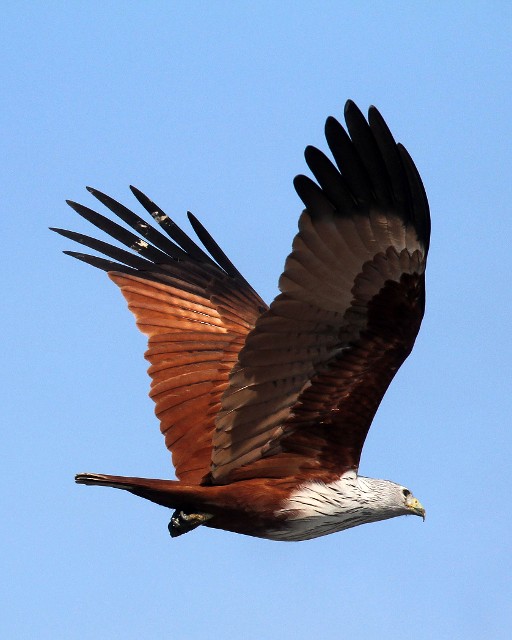
A spectacular little raptor...
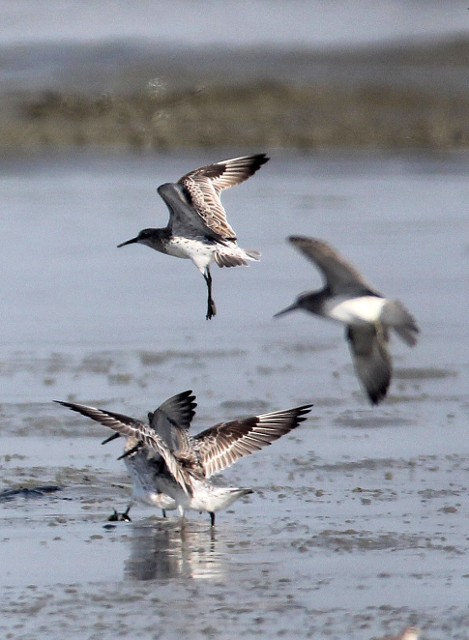
Dunlins...
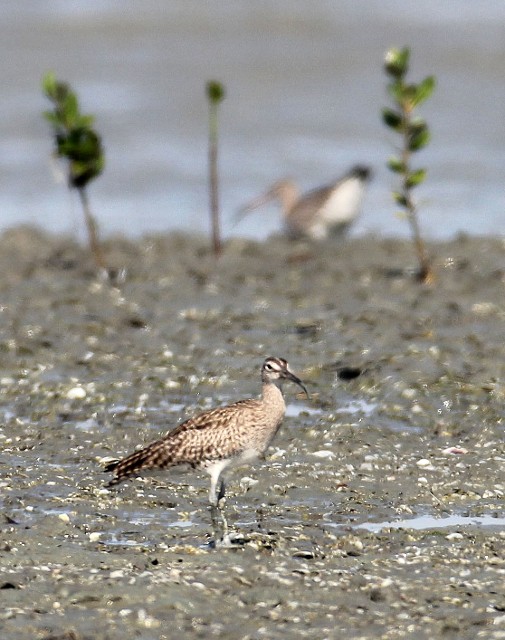
Whimbrel
Some Other Critters of the Western Forest Complex
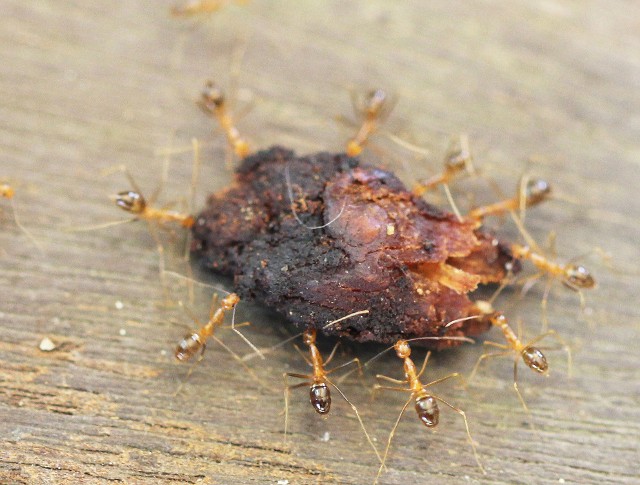
This is what I call teamwork!
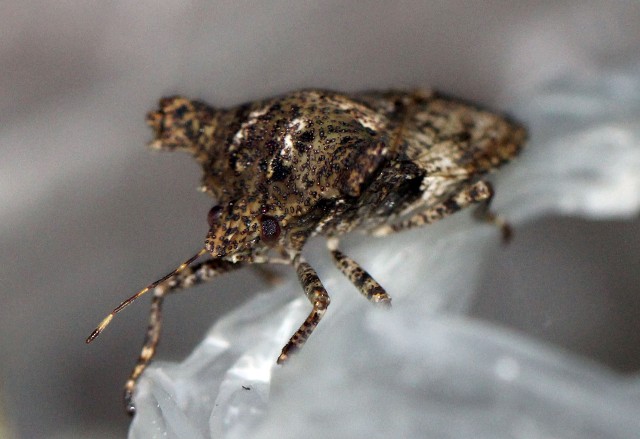
Very cryptic Pentatomid bug shot by Som.
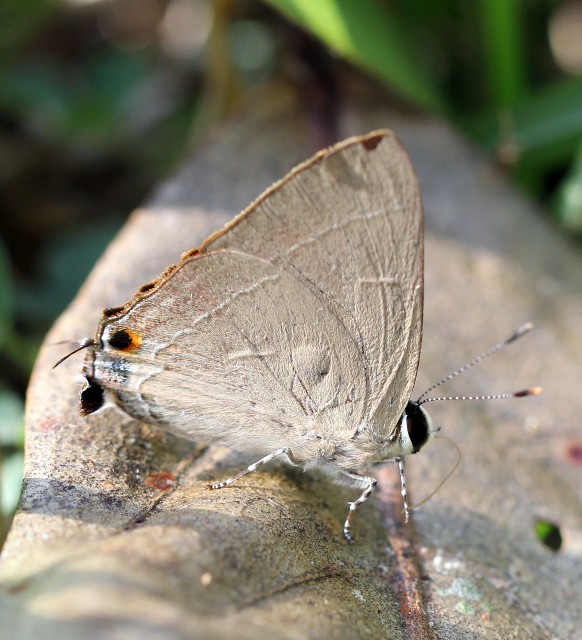
Som really worked the micro-lepidoptera species in HKK.
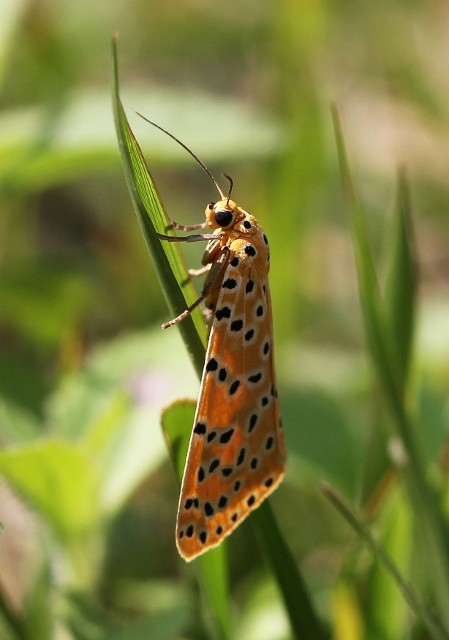
Lovely moth. Looks like an Arctiid but I am not sure.
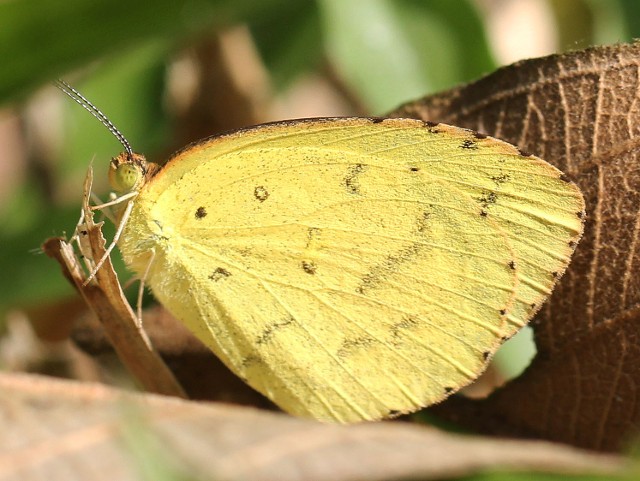
Pierid butterfly
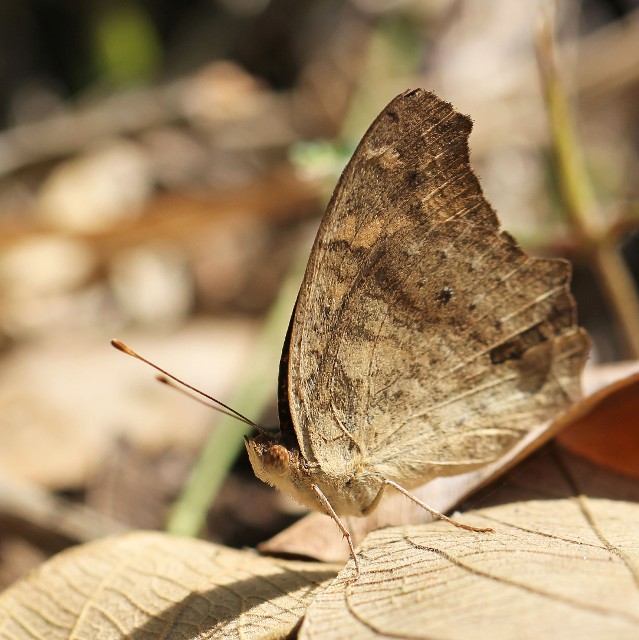
Lep!
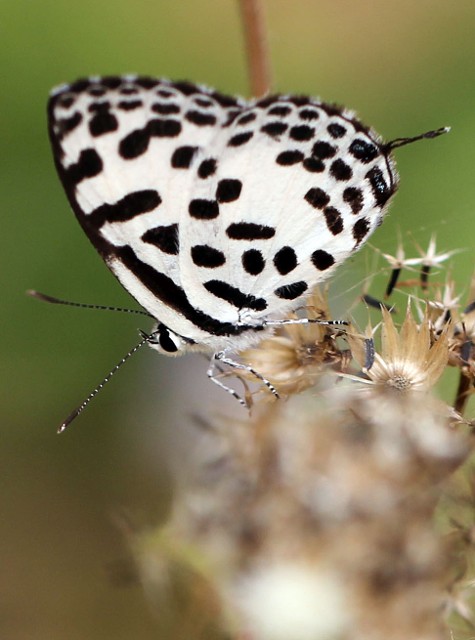
Amazing Lycaeniid
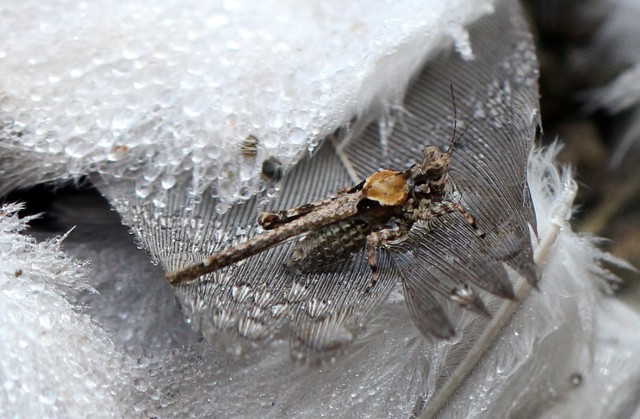
Wild looking Orthoptera species
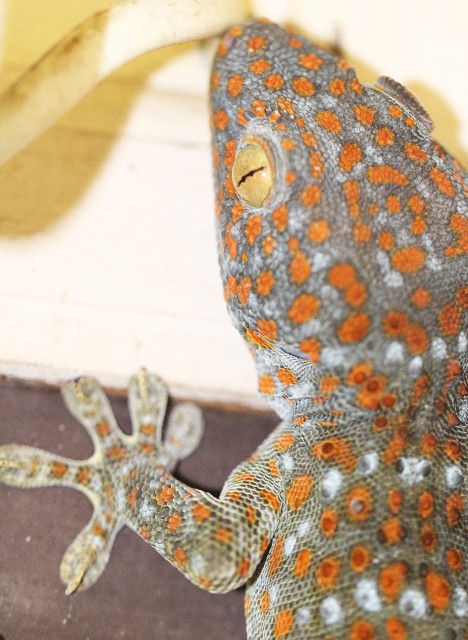
At about 12 inches, this was a medium-sized Tokay Gecko found in our cabin at Kraprok Krapiyen.
Other Stuff!
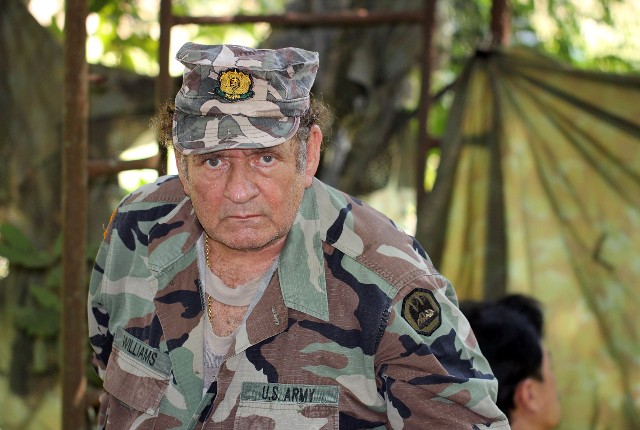
Our buddy Bruce Kekule in his "own private" tiger reserve, Huai Kha Khaeng!
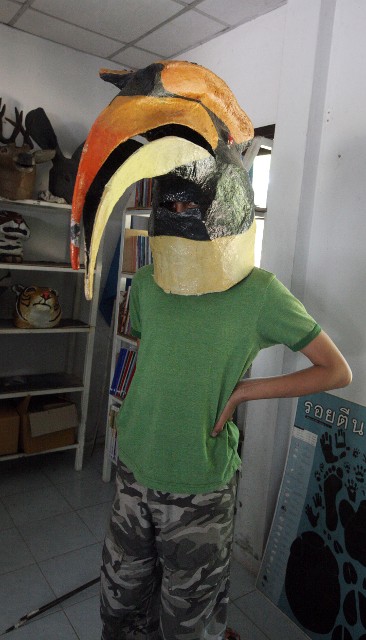
About seven years ago, Cokie dawned this same Great Hornbill mask! (See our trip report here)
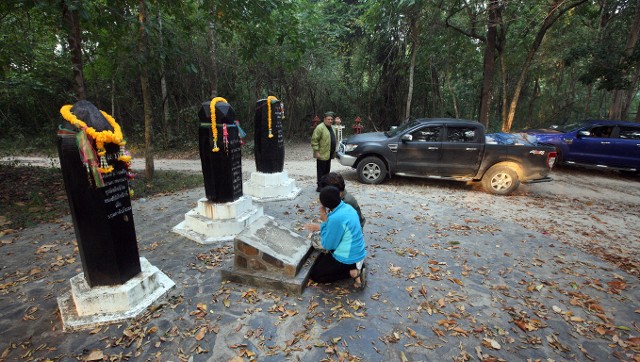
Shrines for the rangers who gave their lives for the protection of Huai Kha Khaeng's natural heritage.
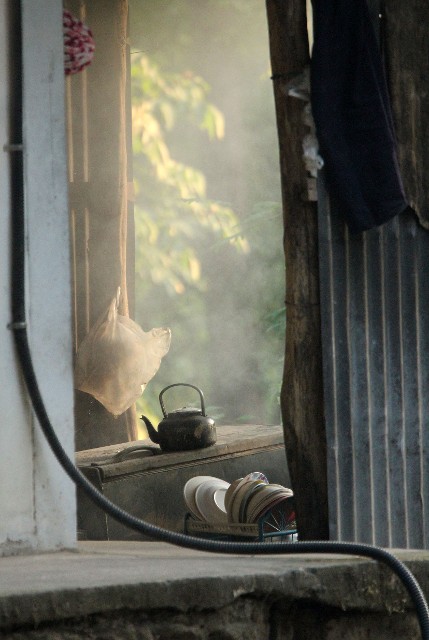
Kraprok Krapiyen Station
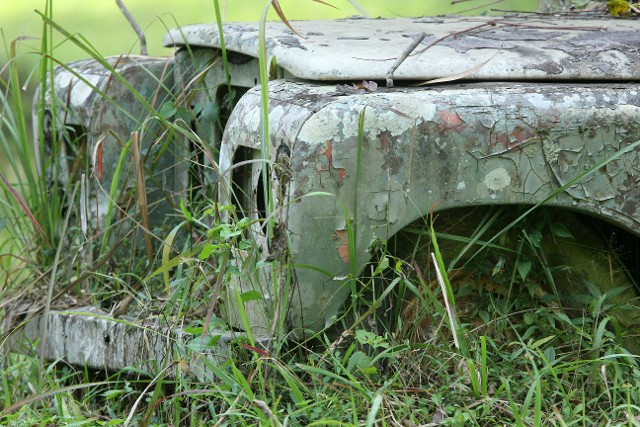
An old patrol vehicle at Kraprok Krapiyen. Wonder if it still starts....
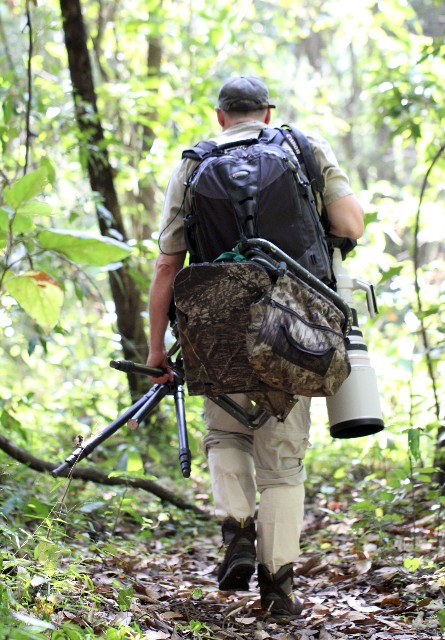
Our short trek to the blind.
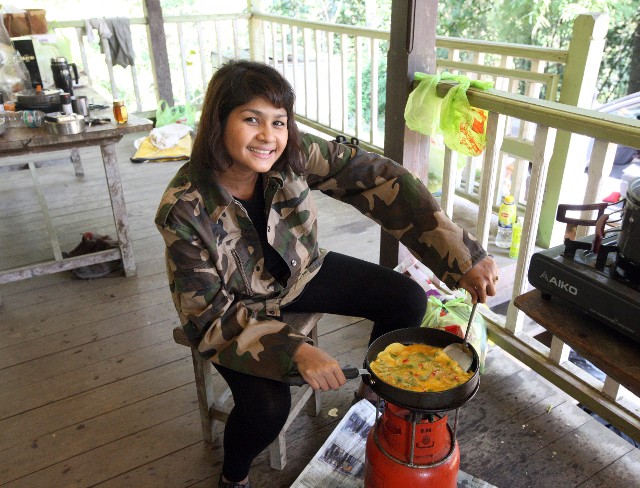
Som and her famous Khai Katiem (Thai omelette)! We eat well everywhere we go....
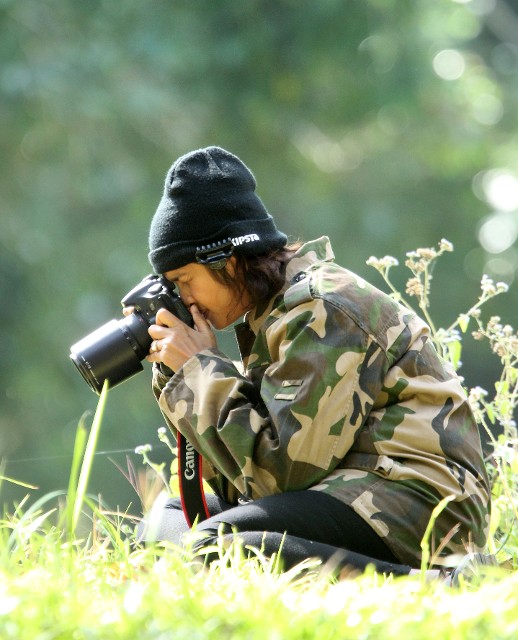
Som focusing on her leps...
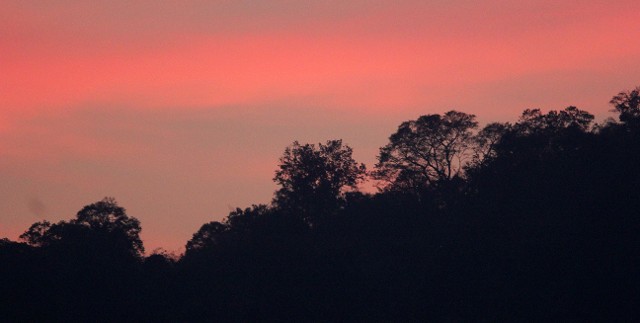
Our final sunset at Khao Ban Dai. What a very special place.
Check Our Our Pbase Galleries
